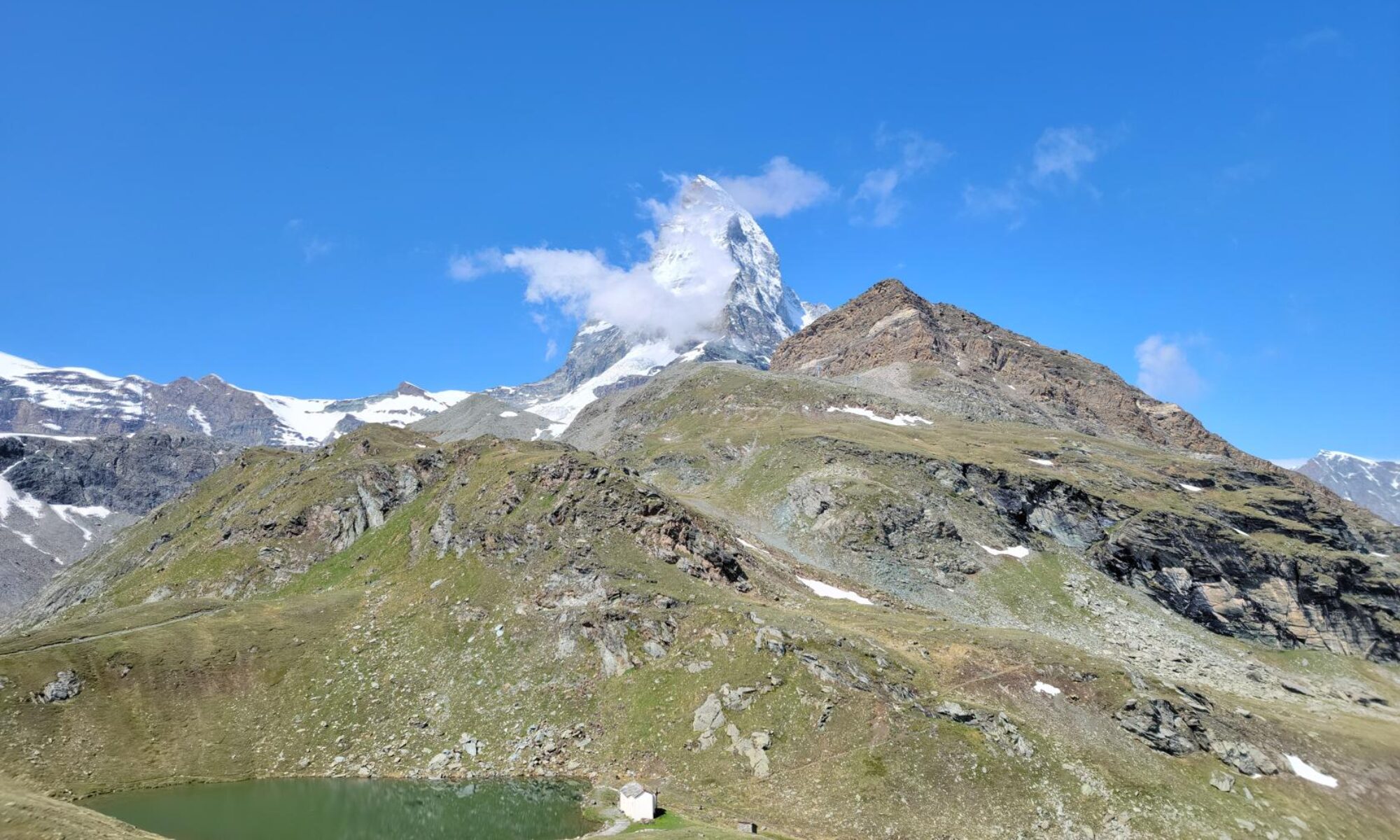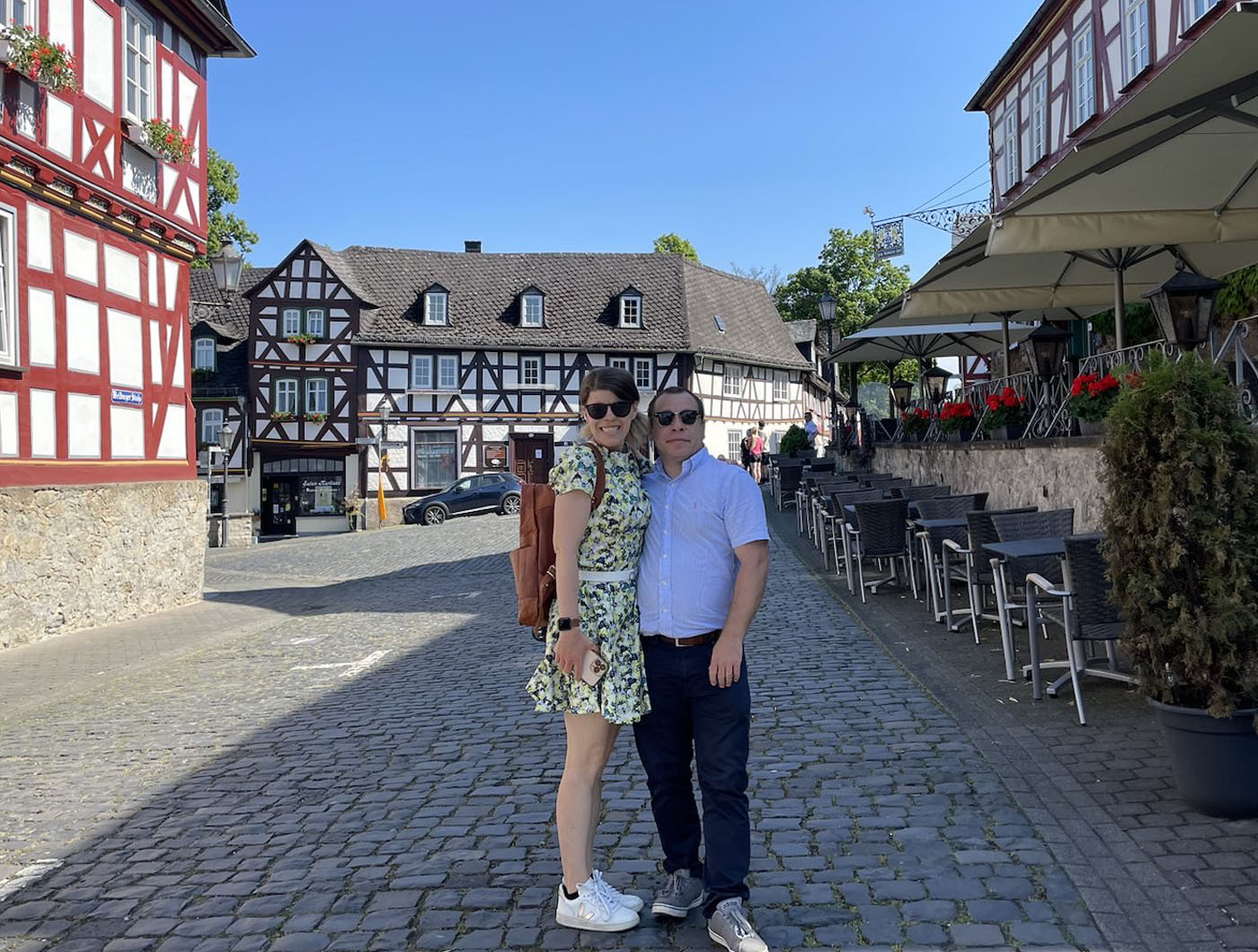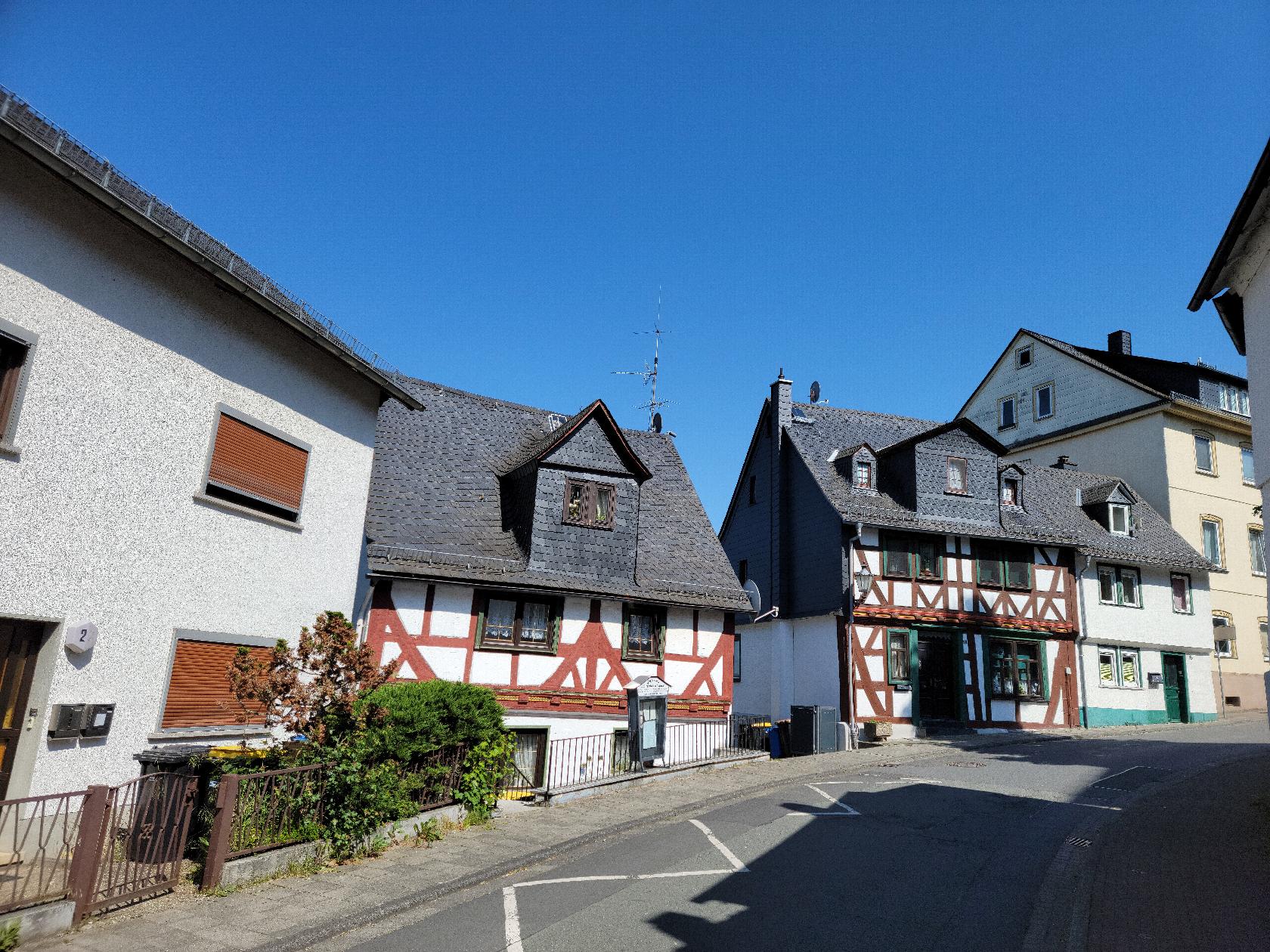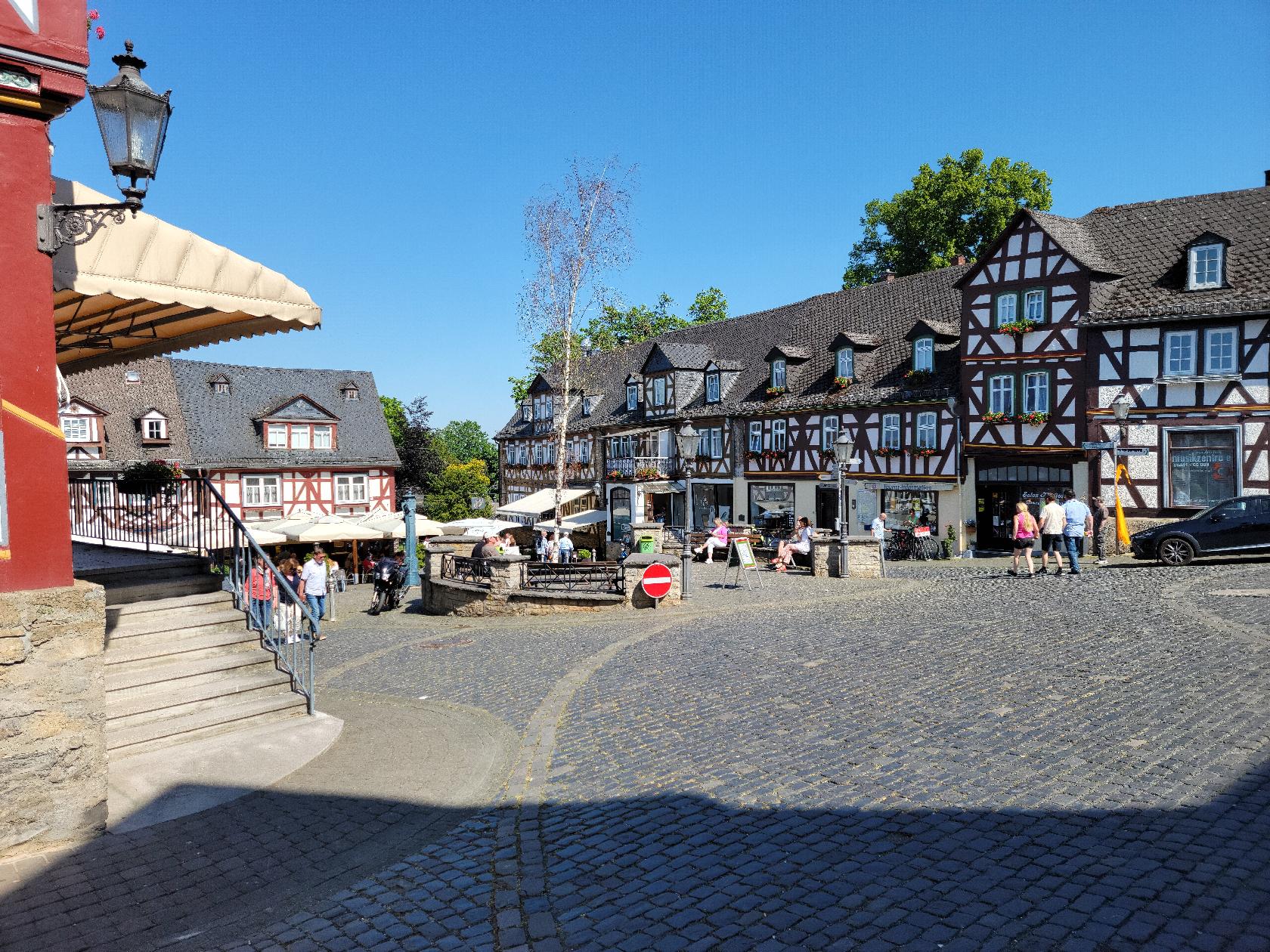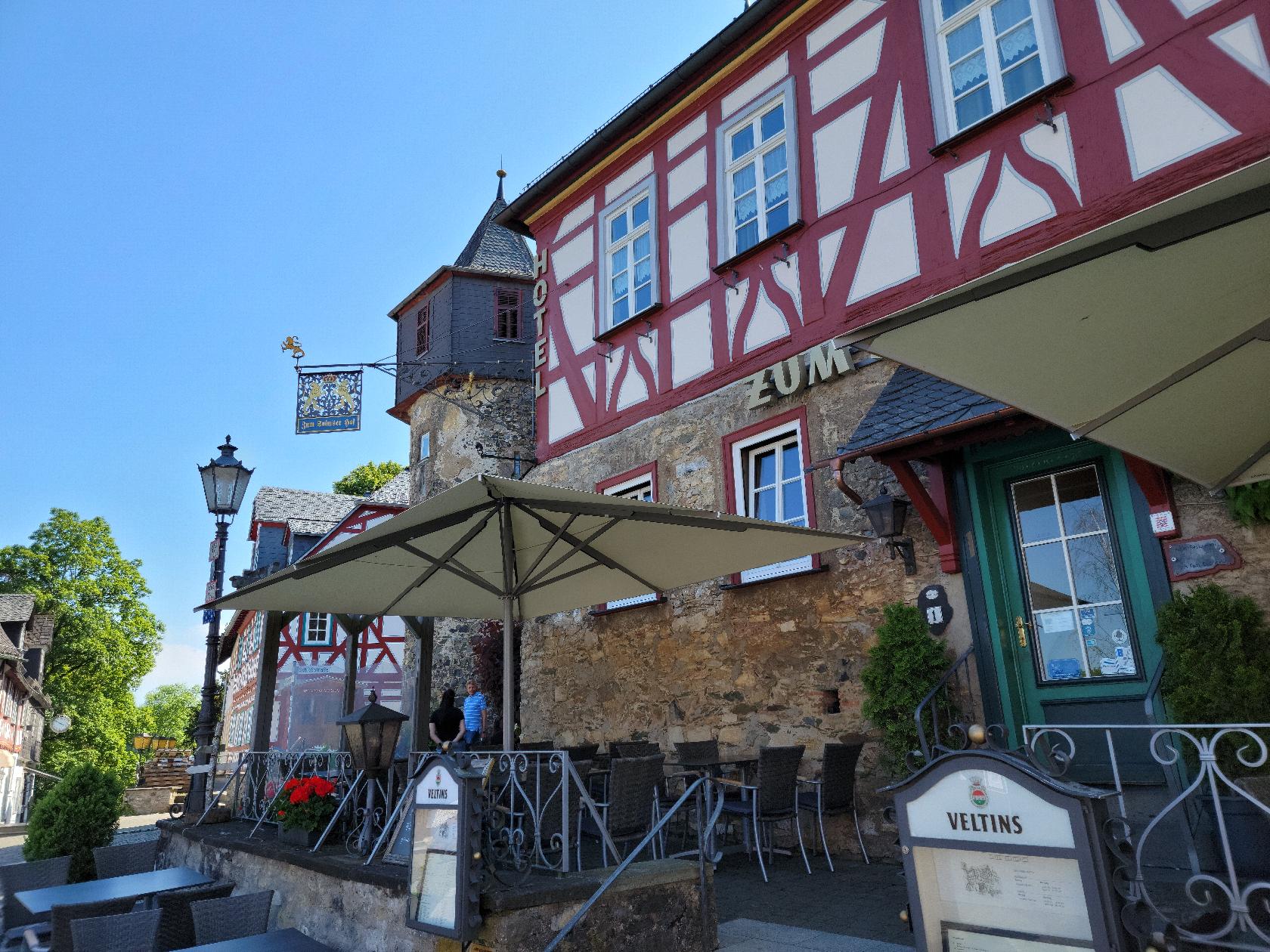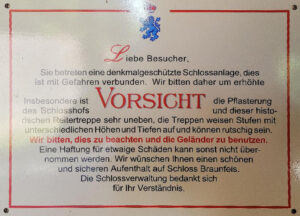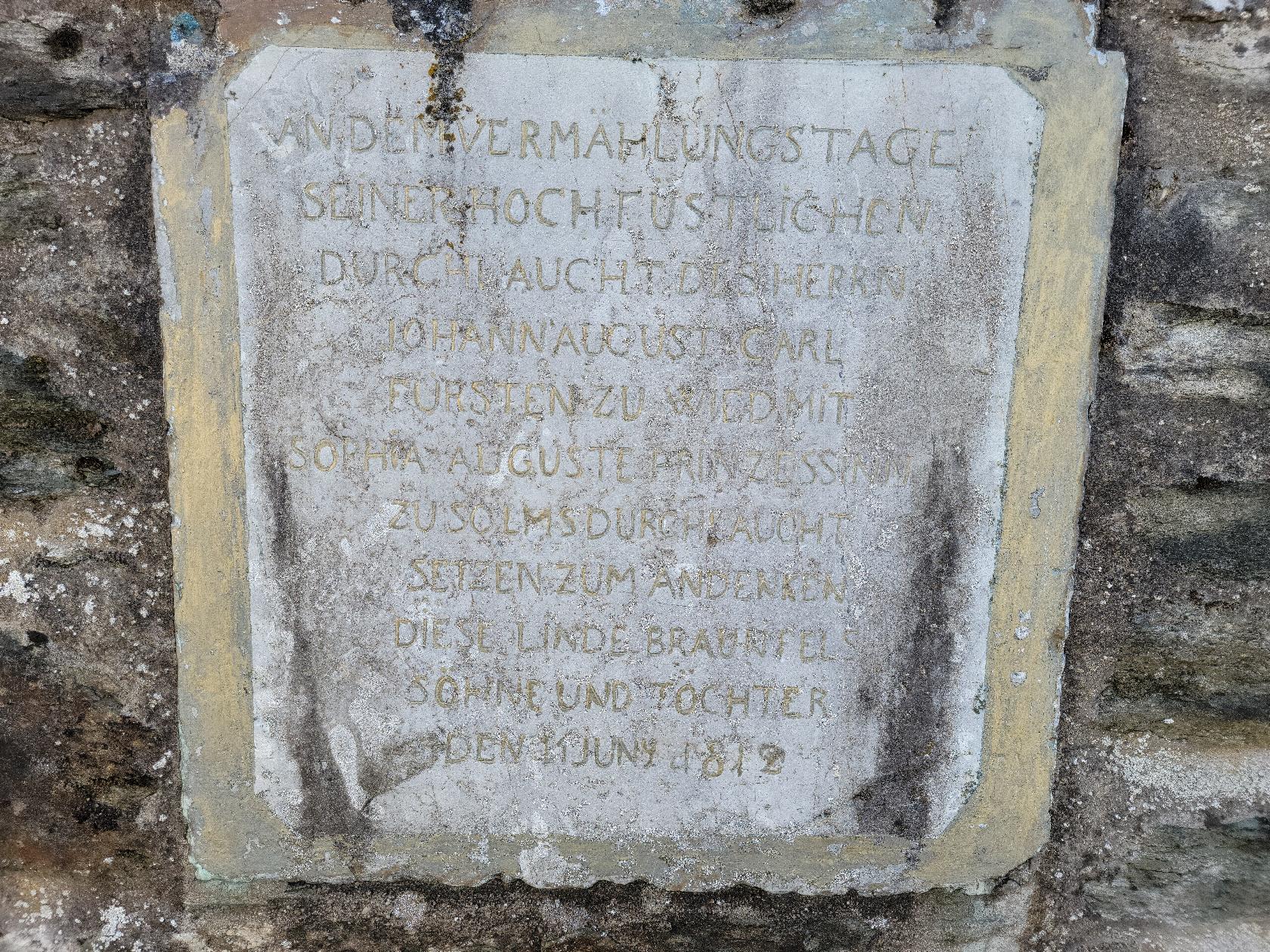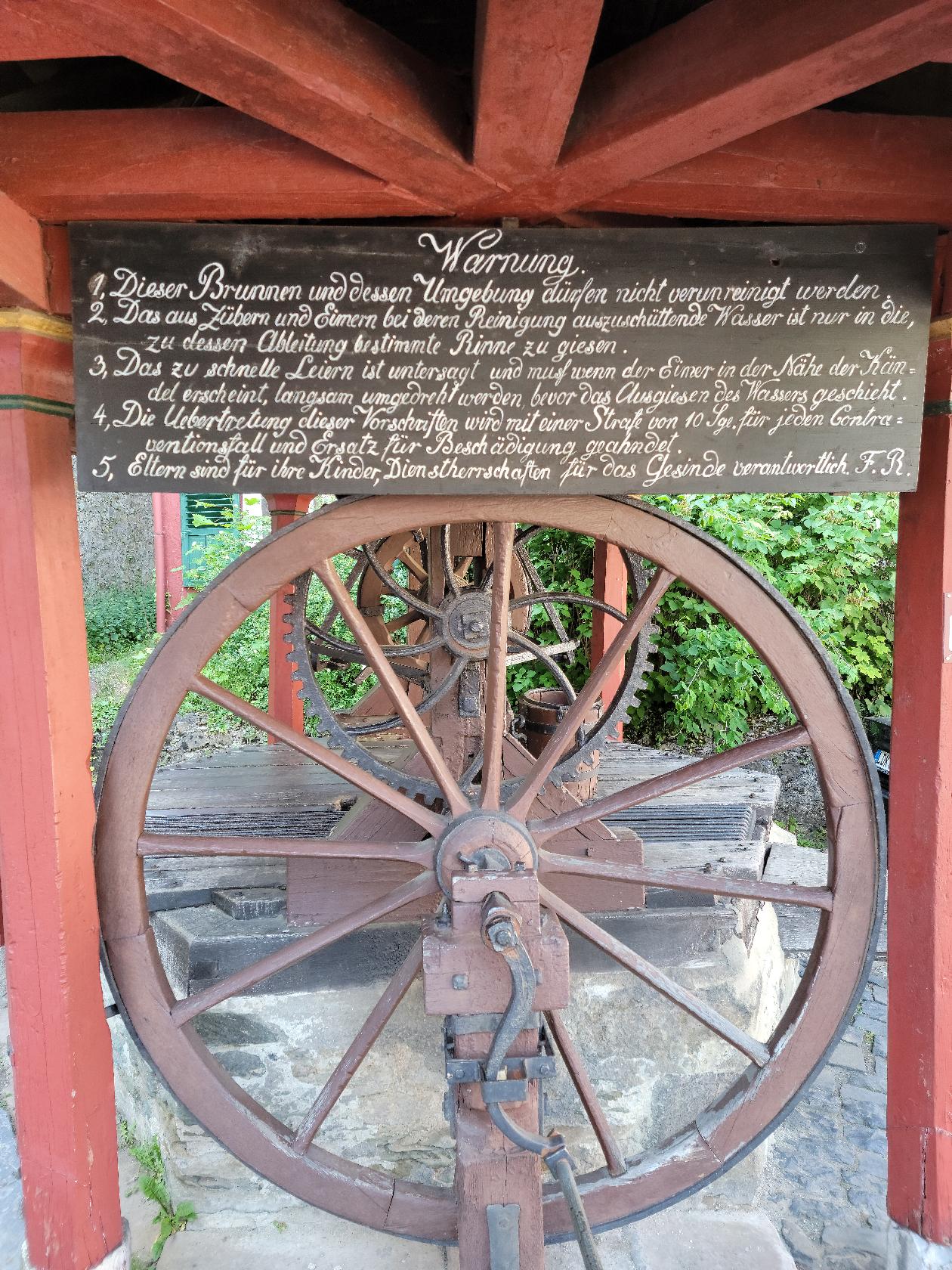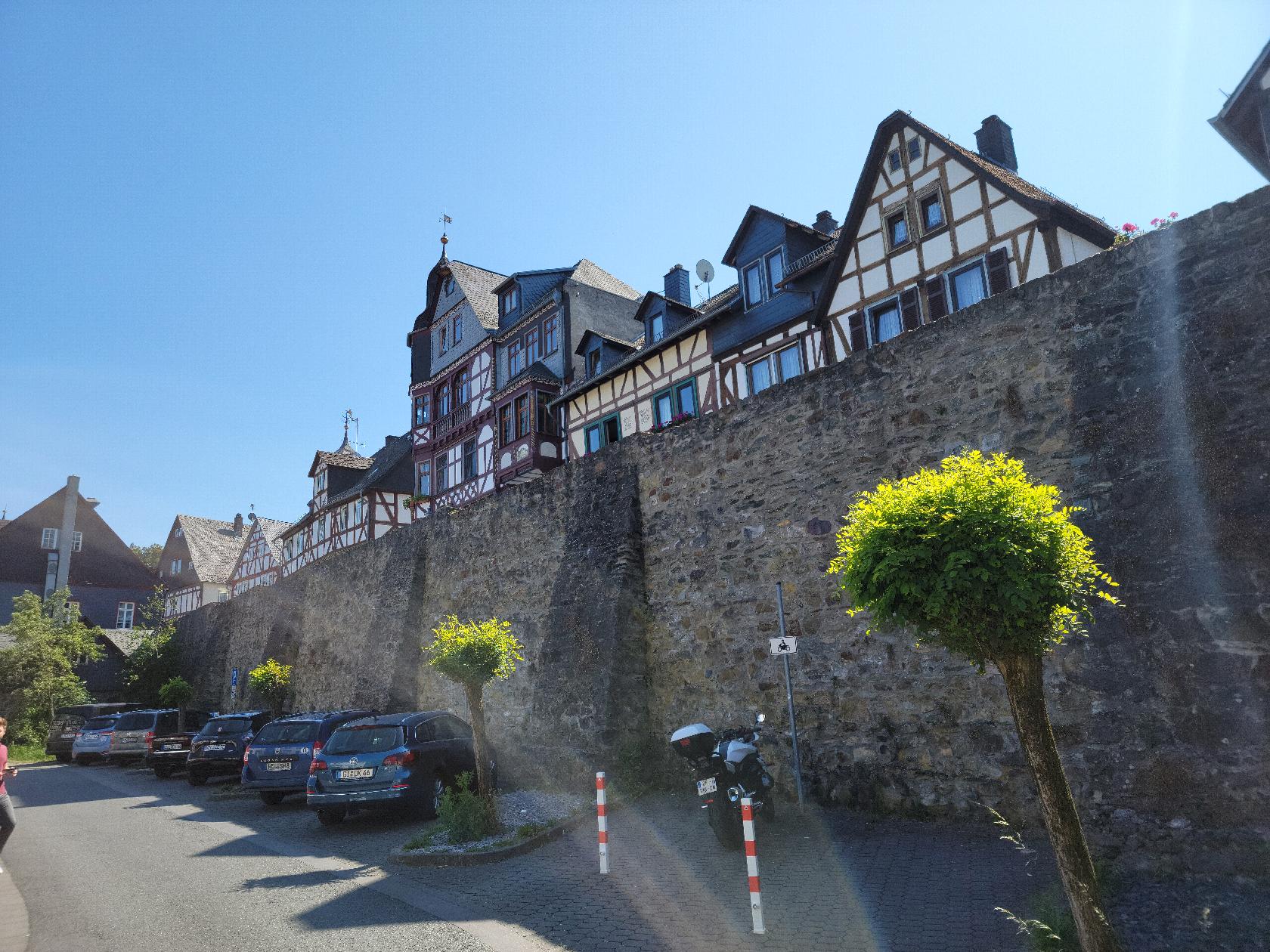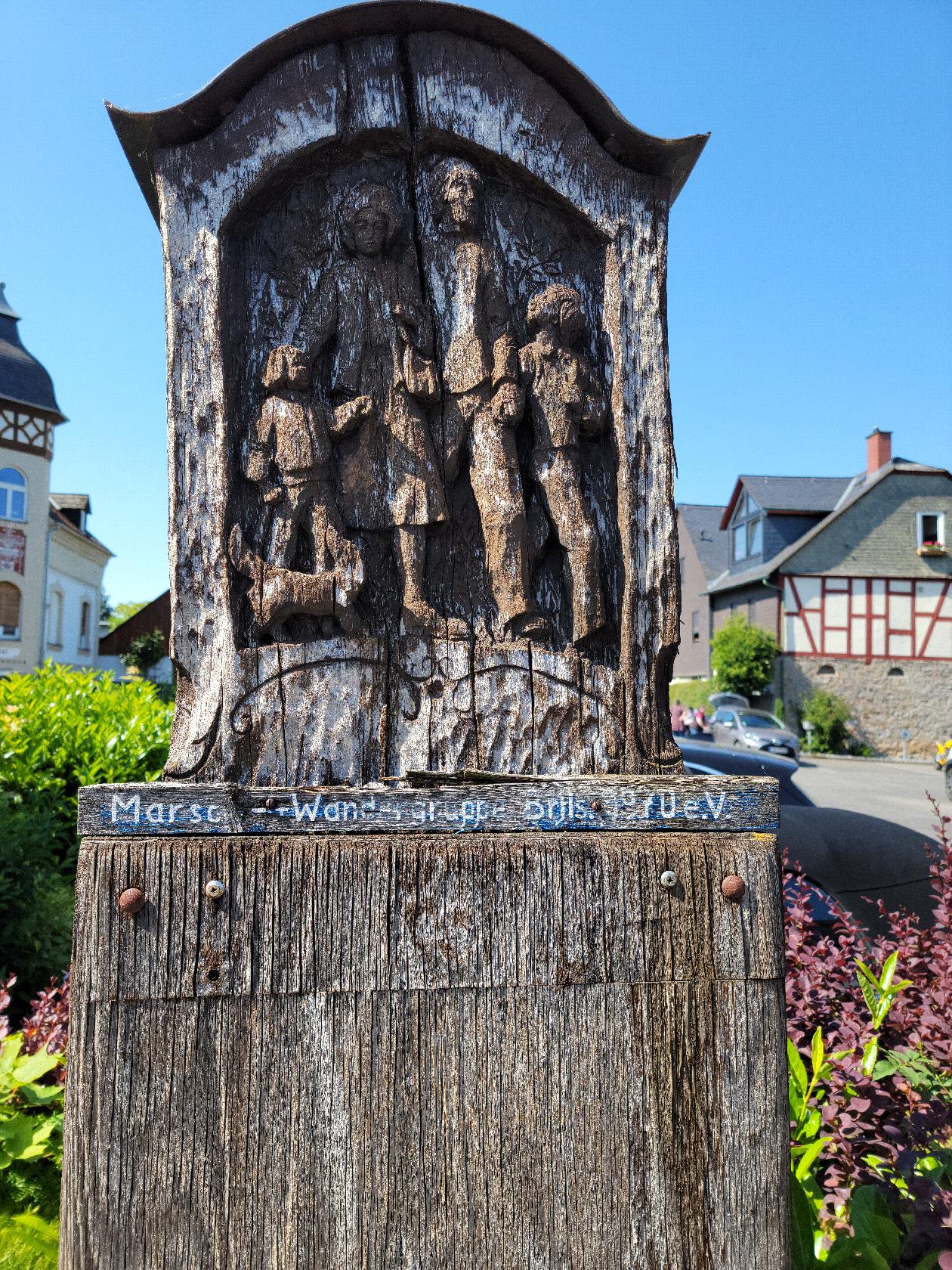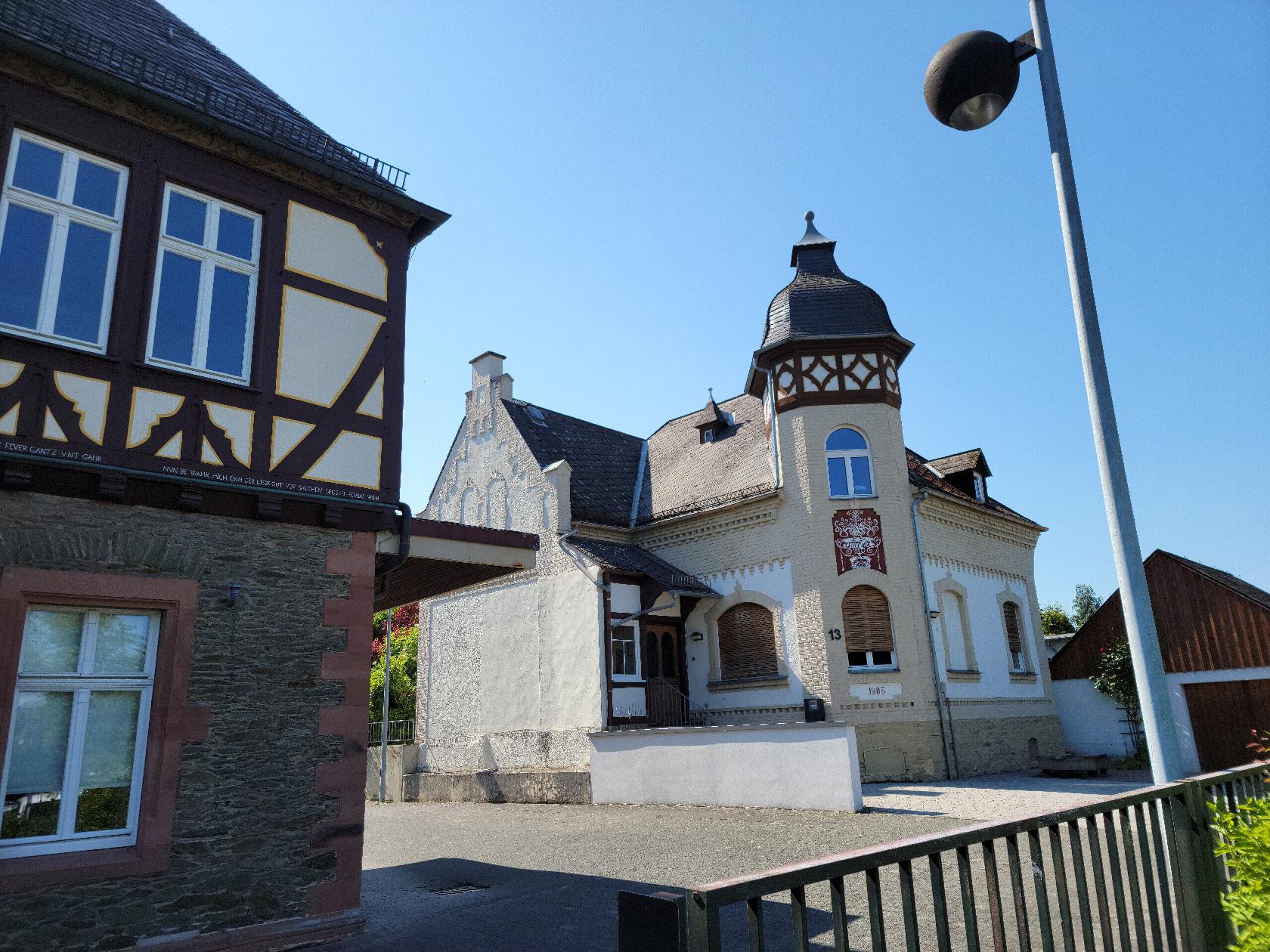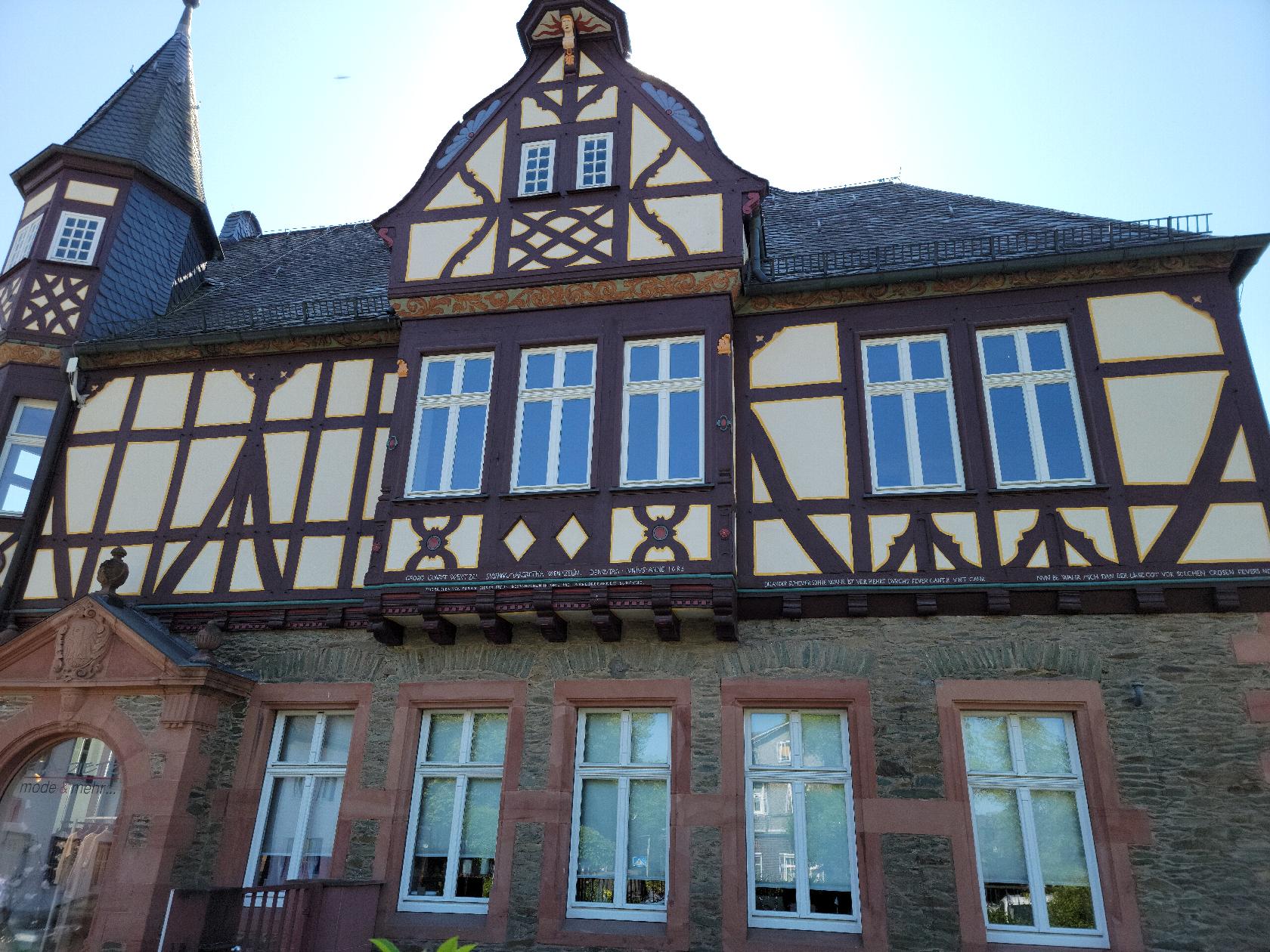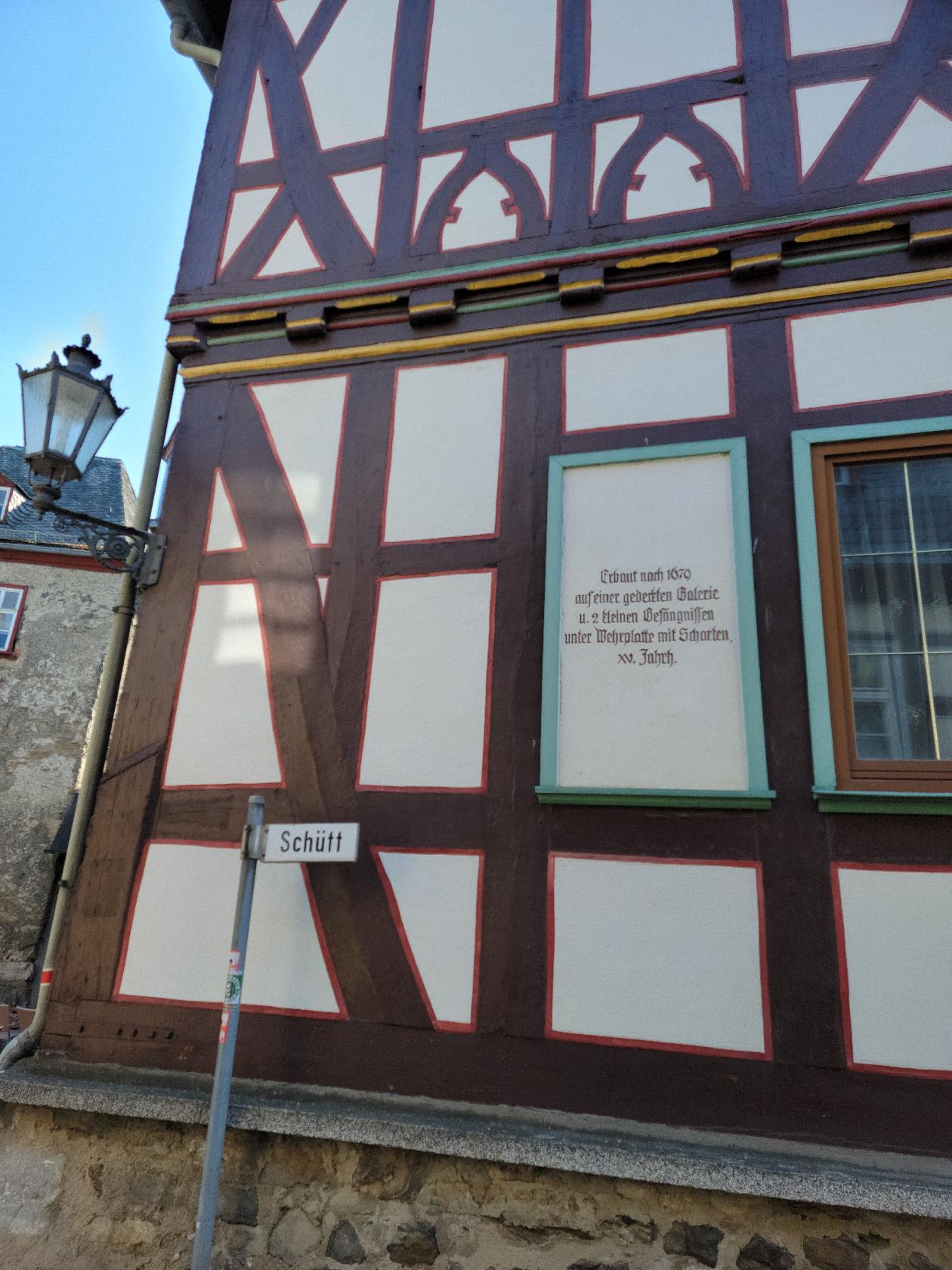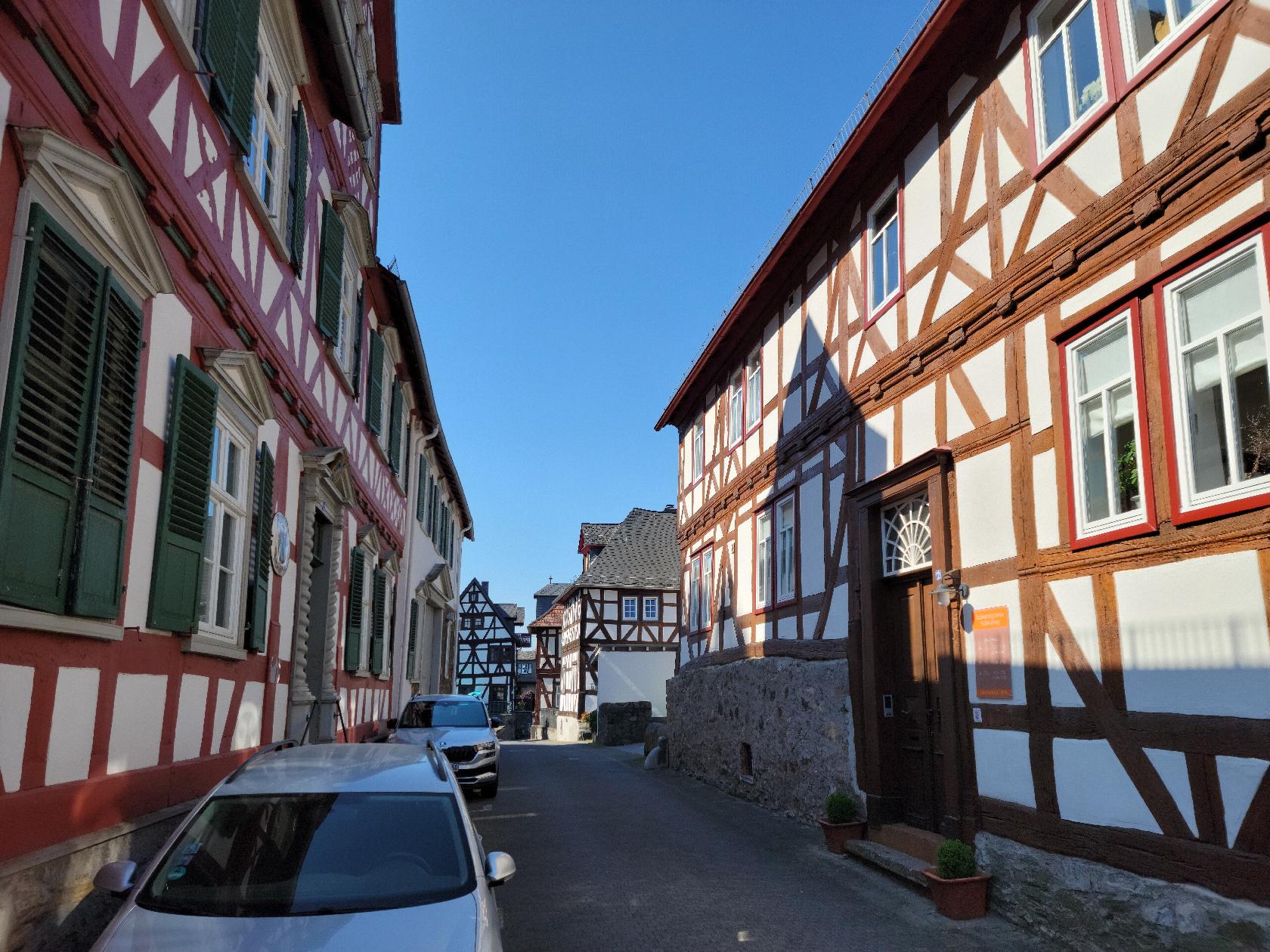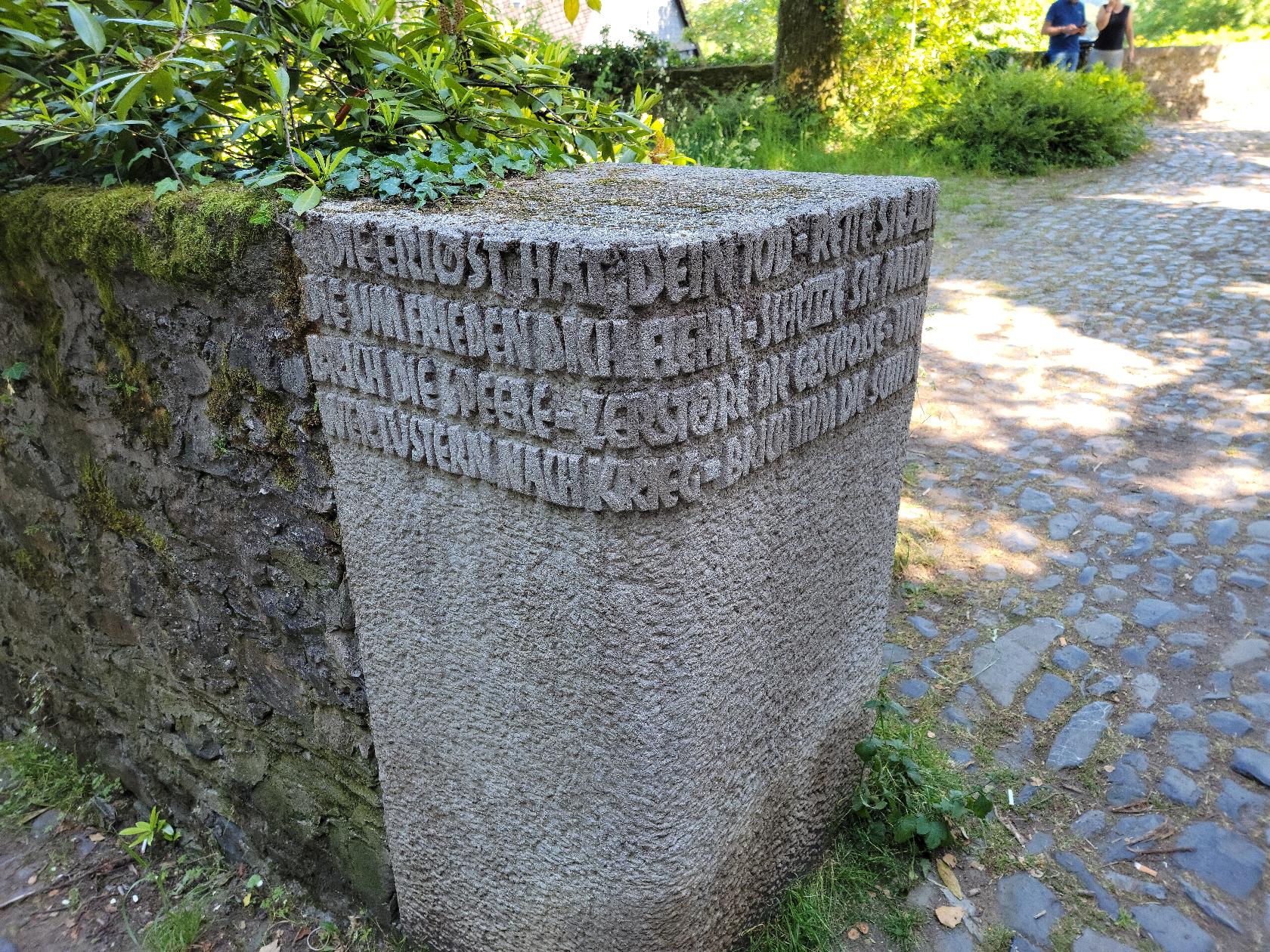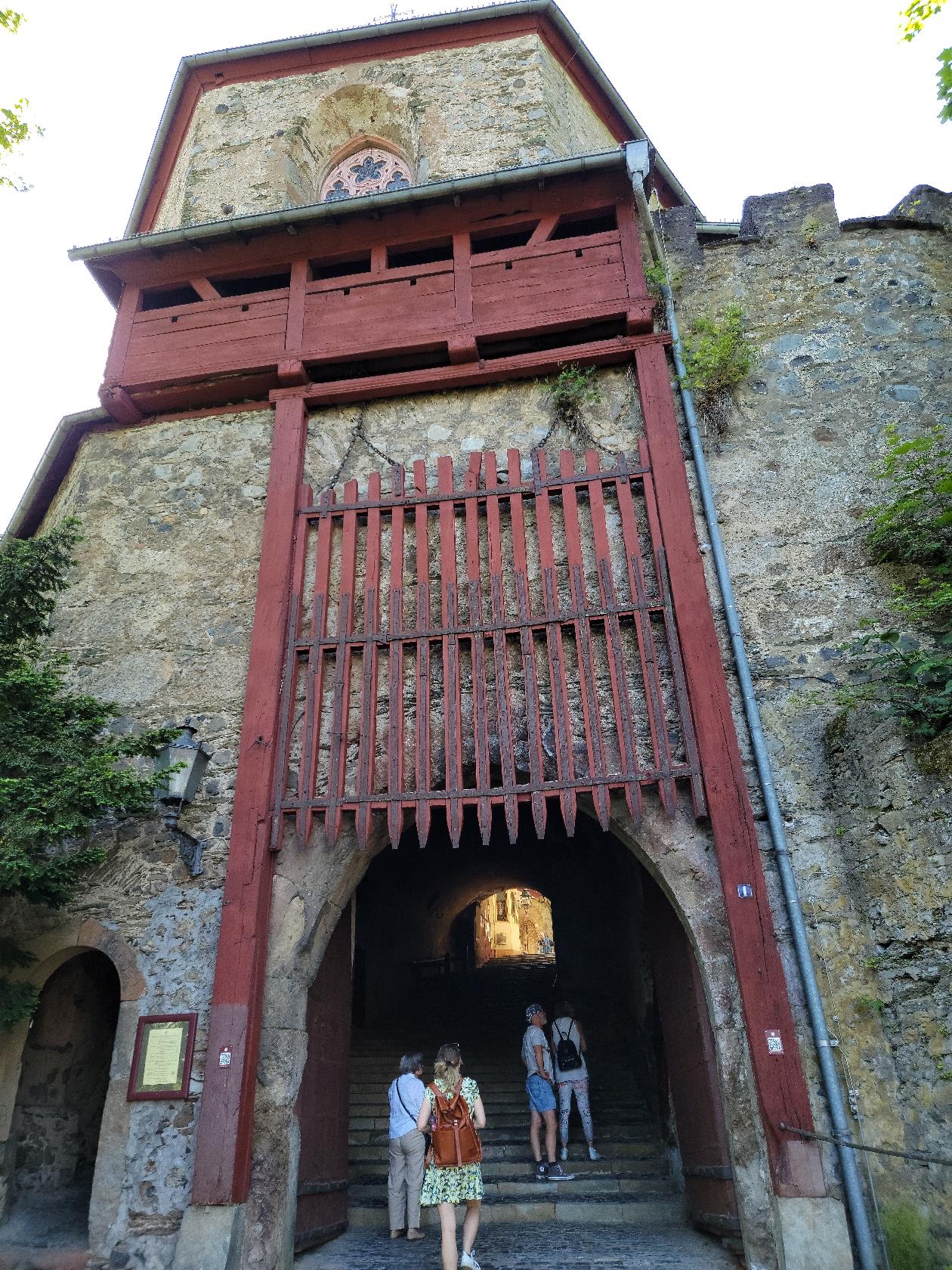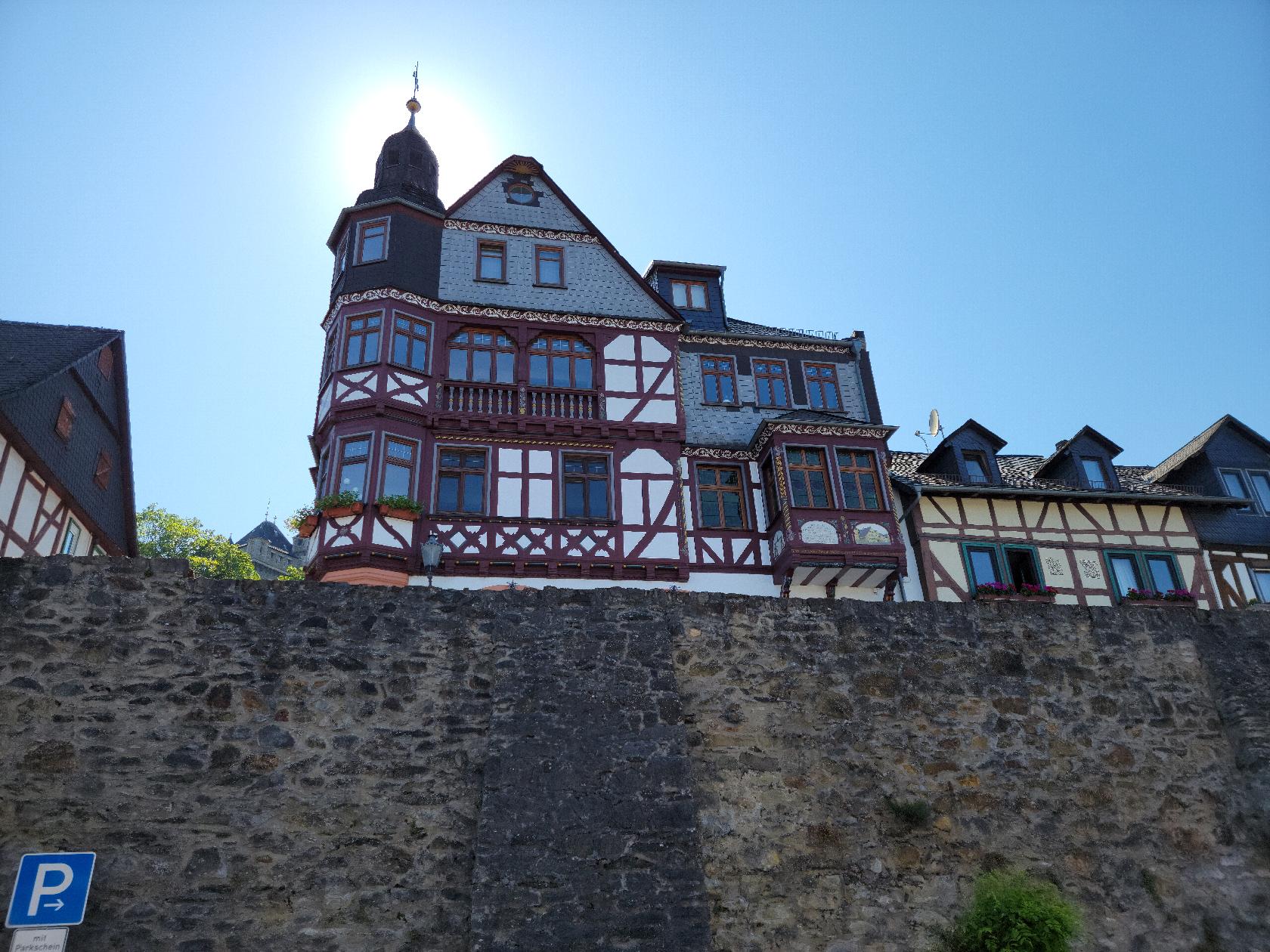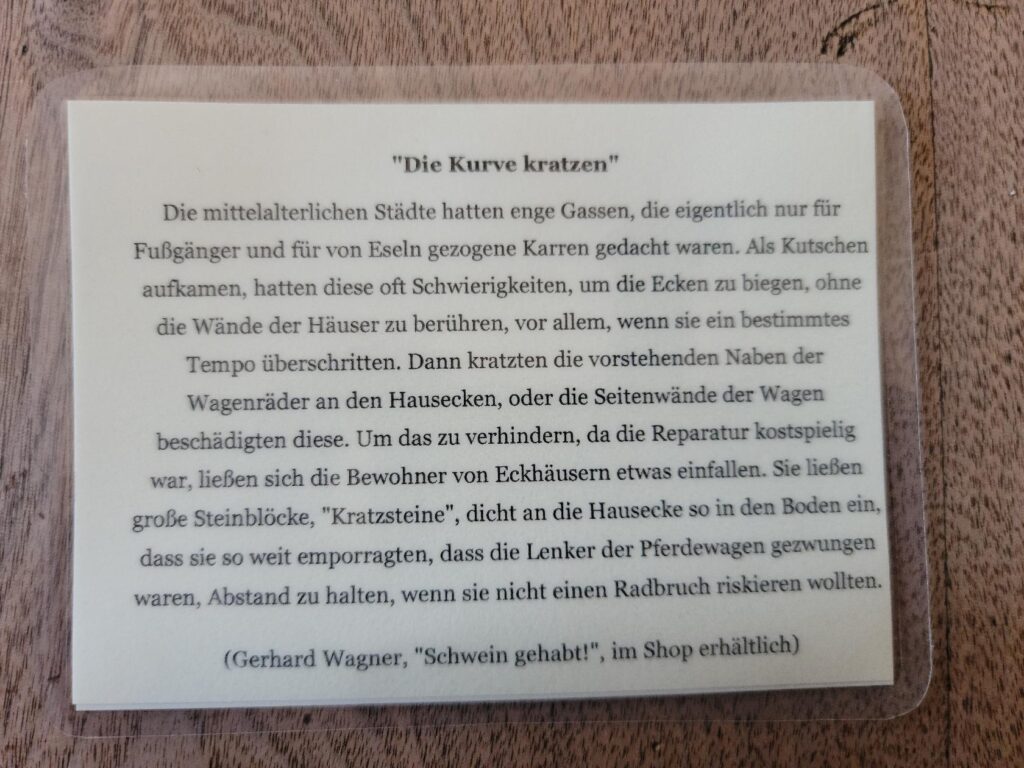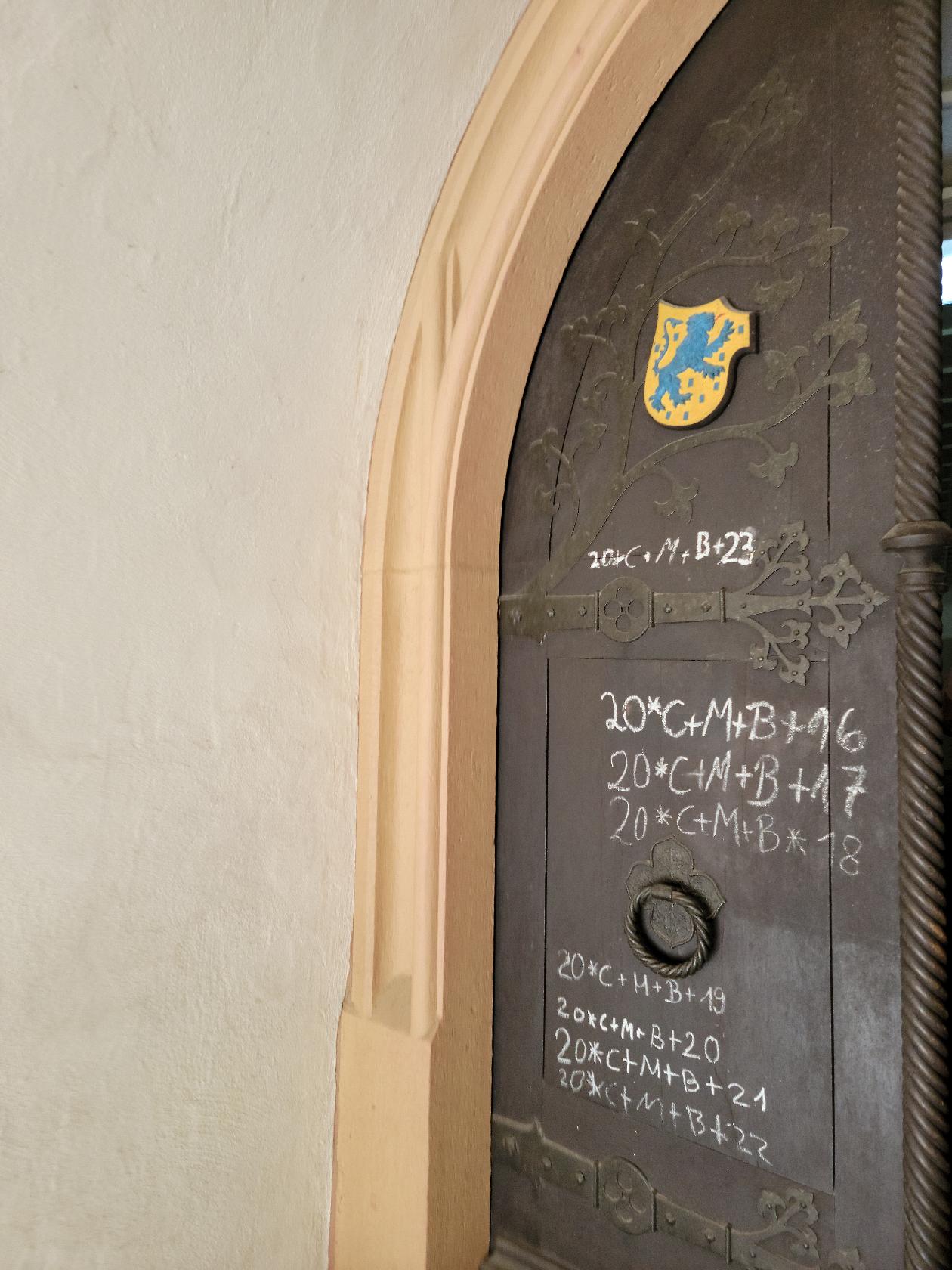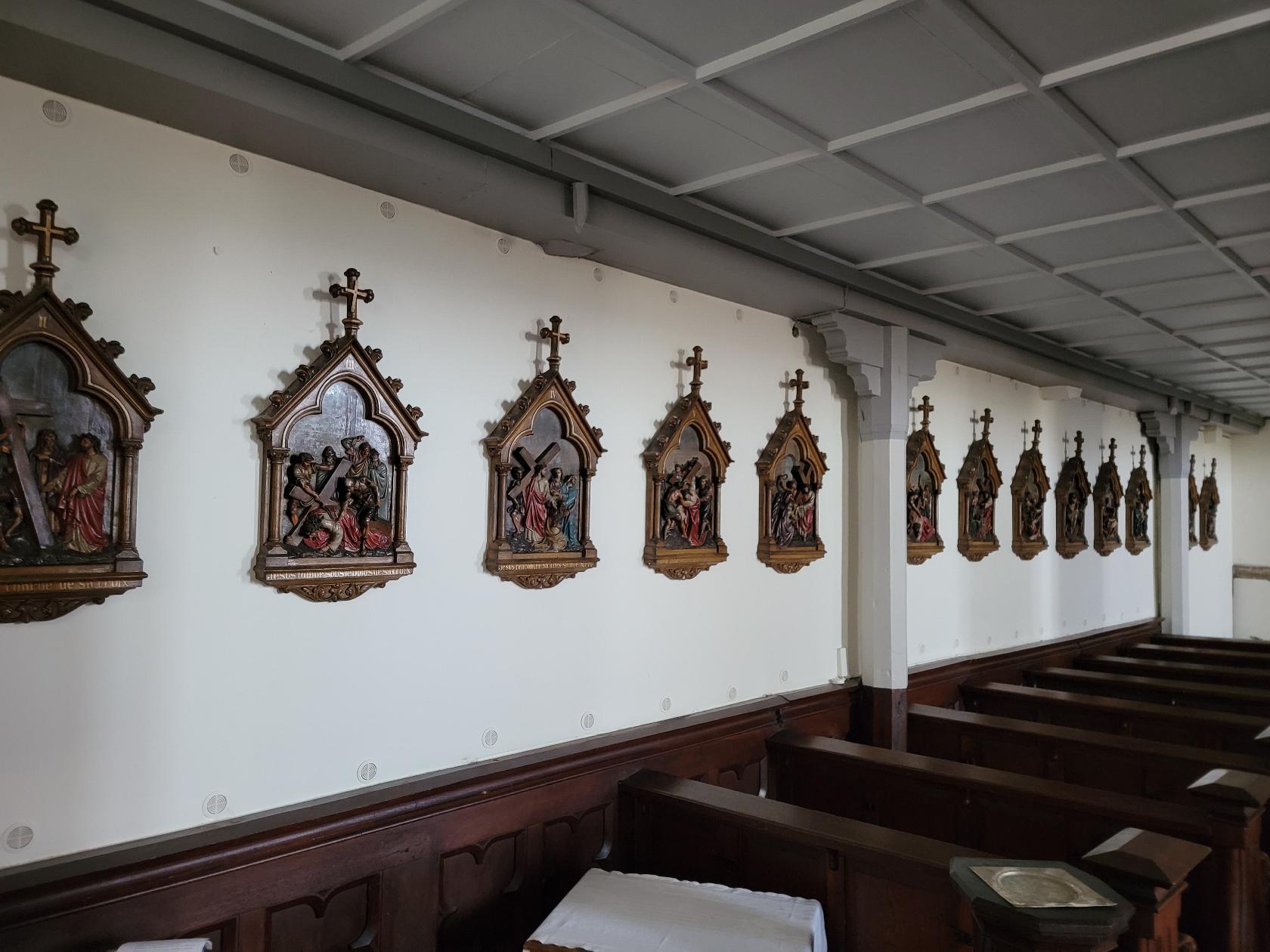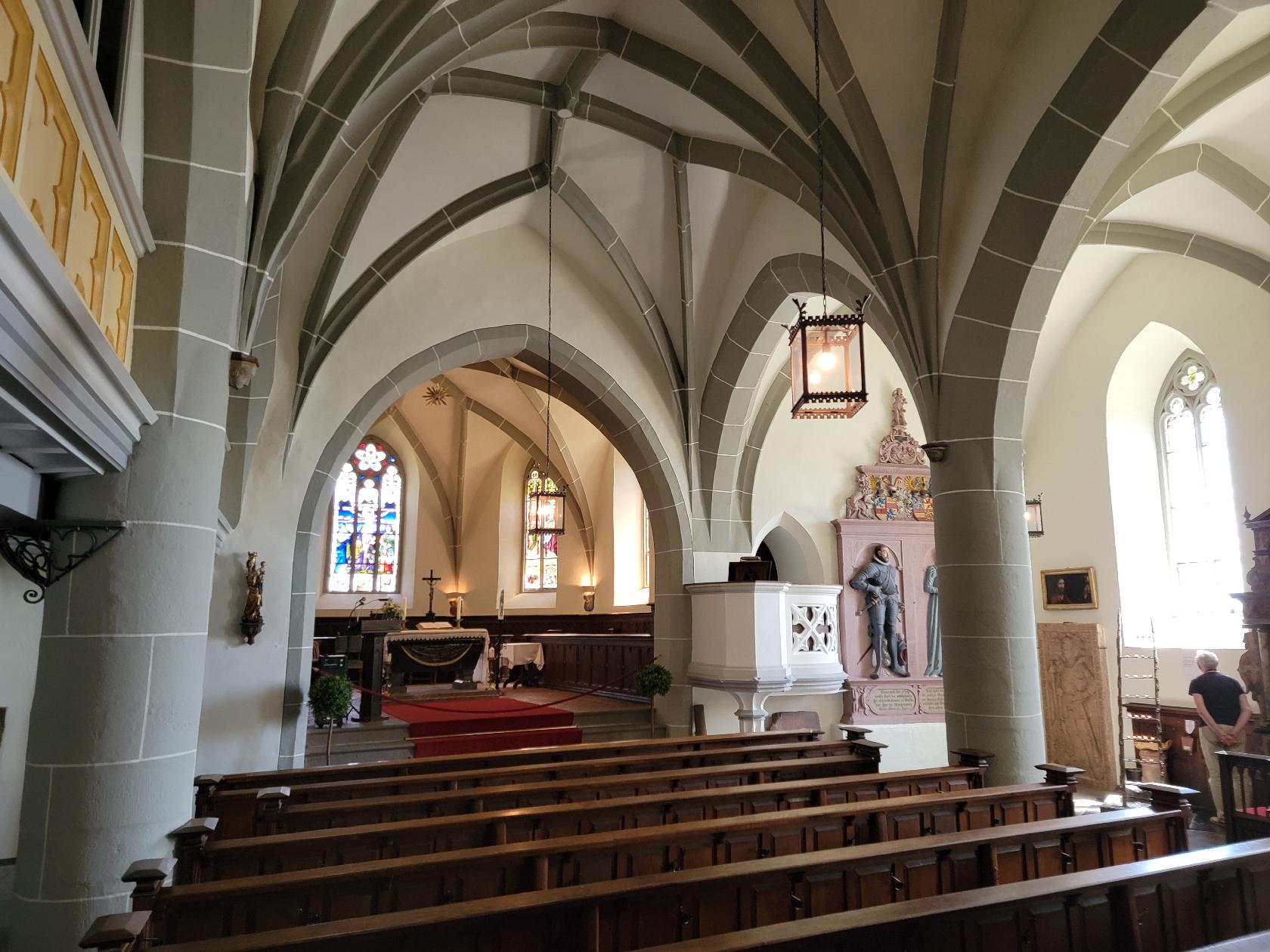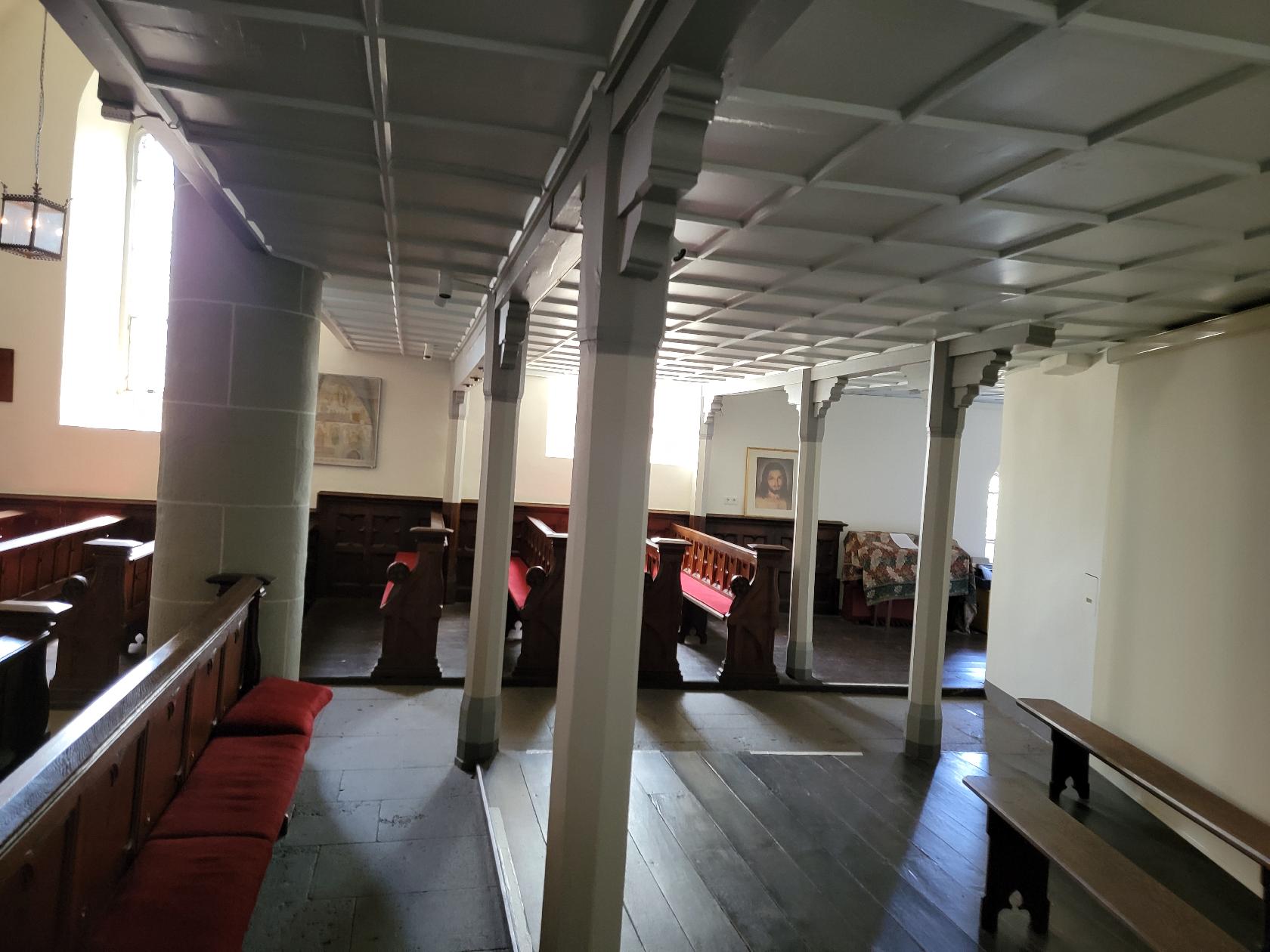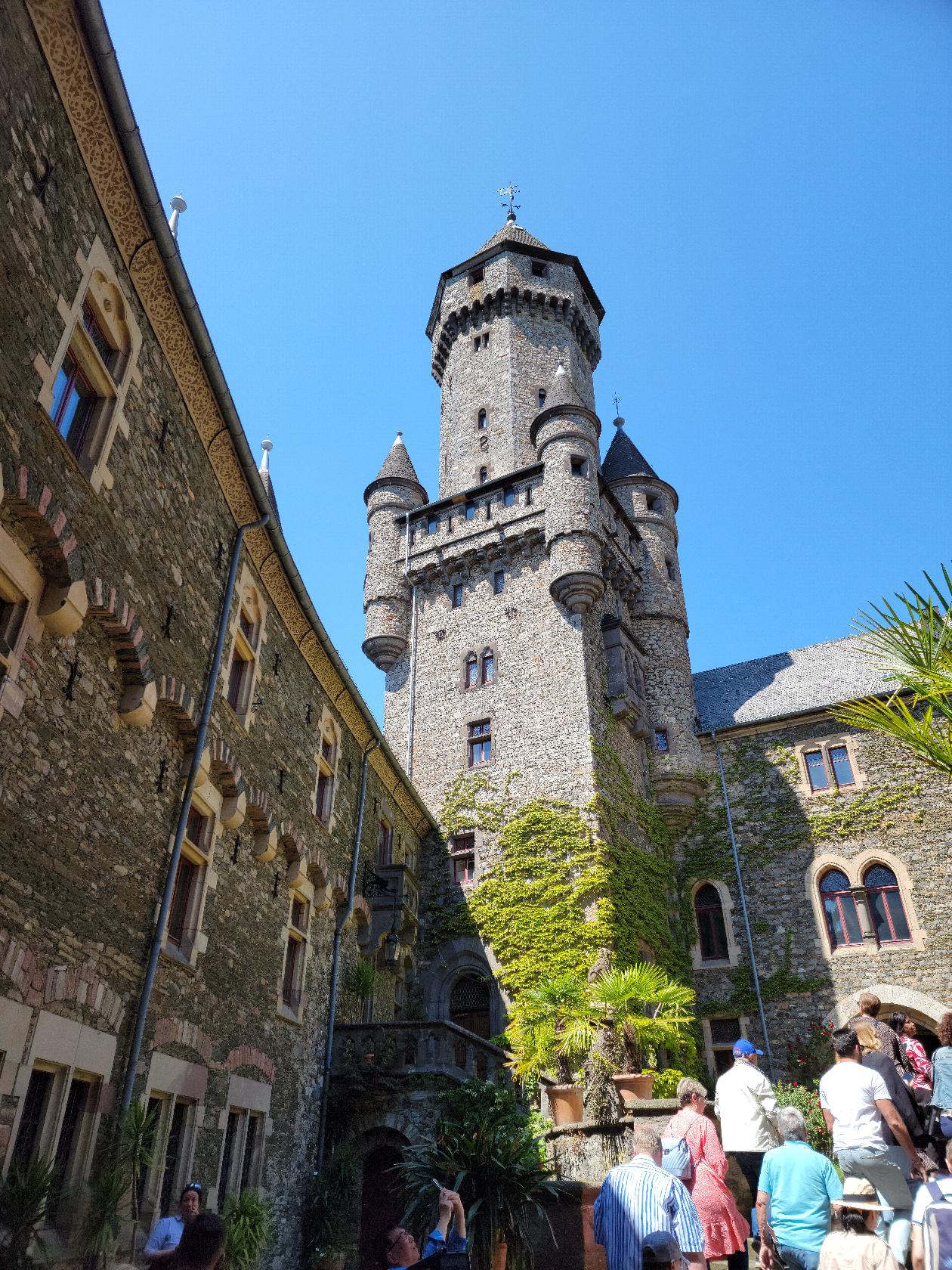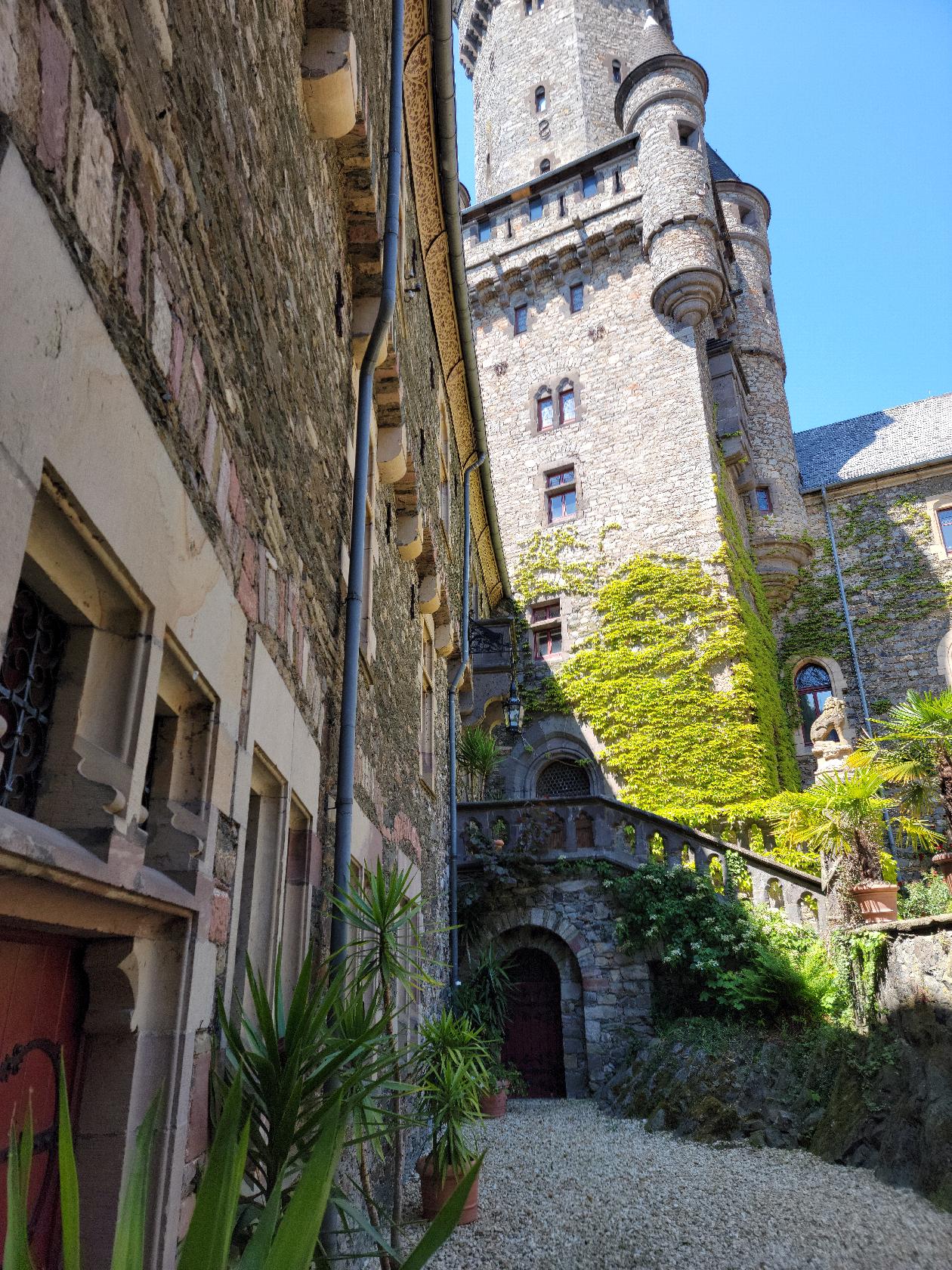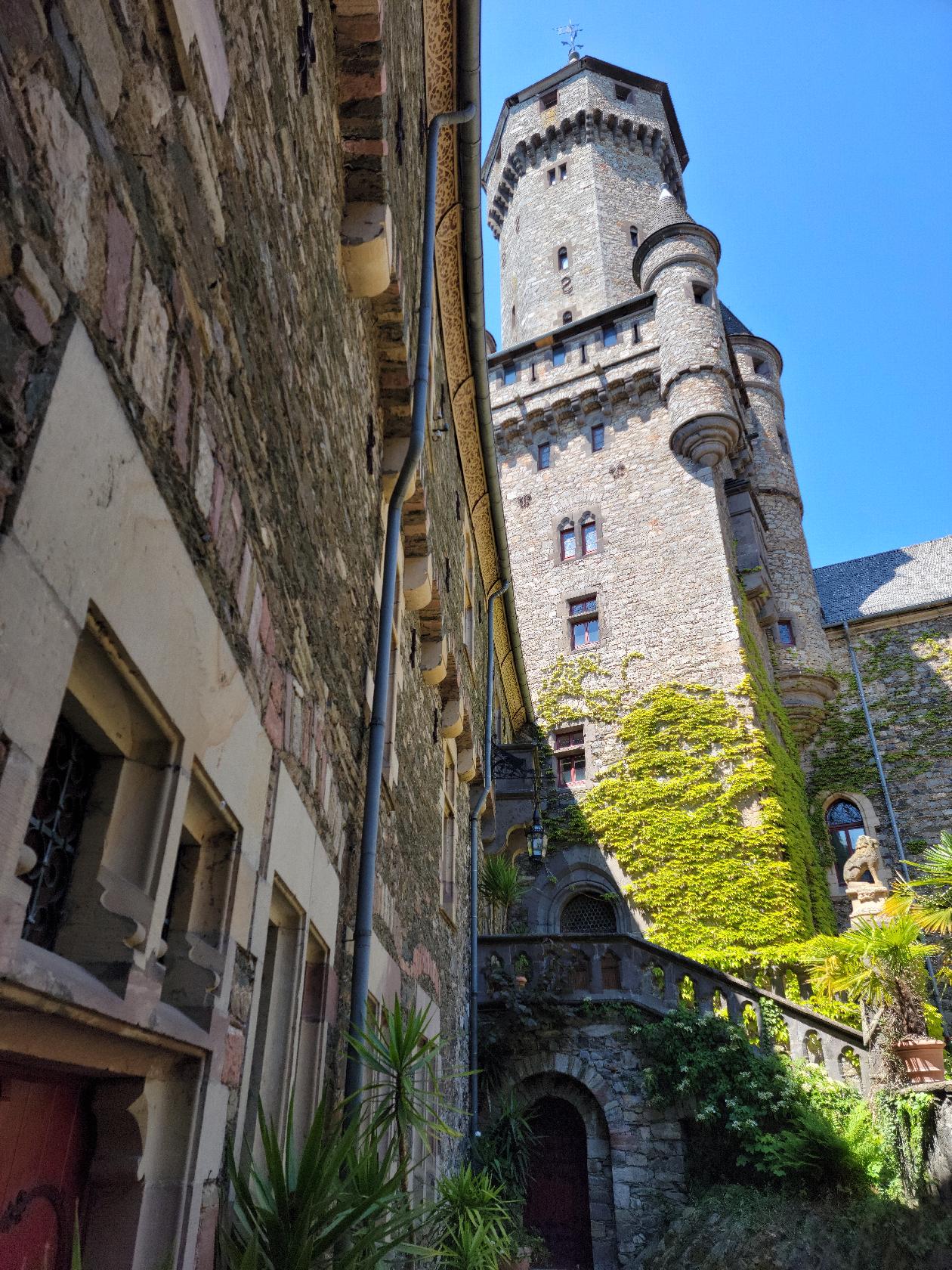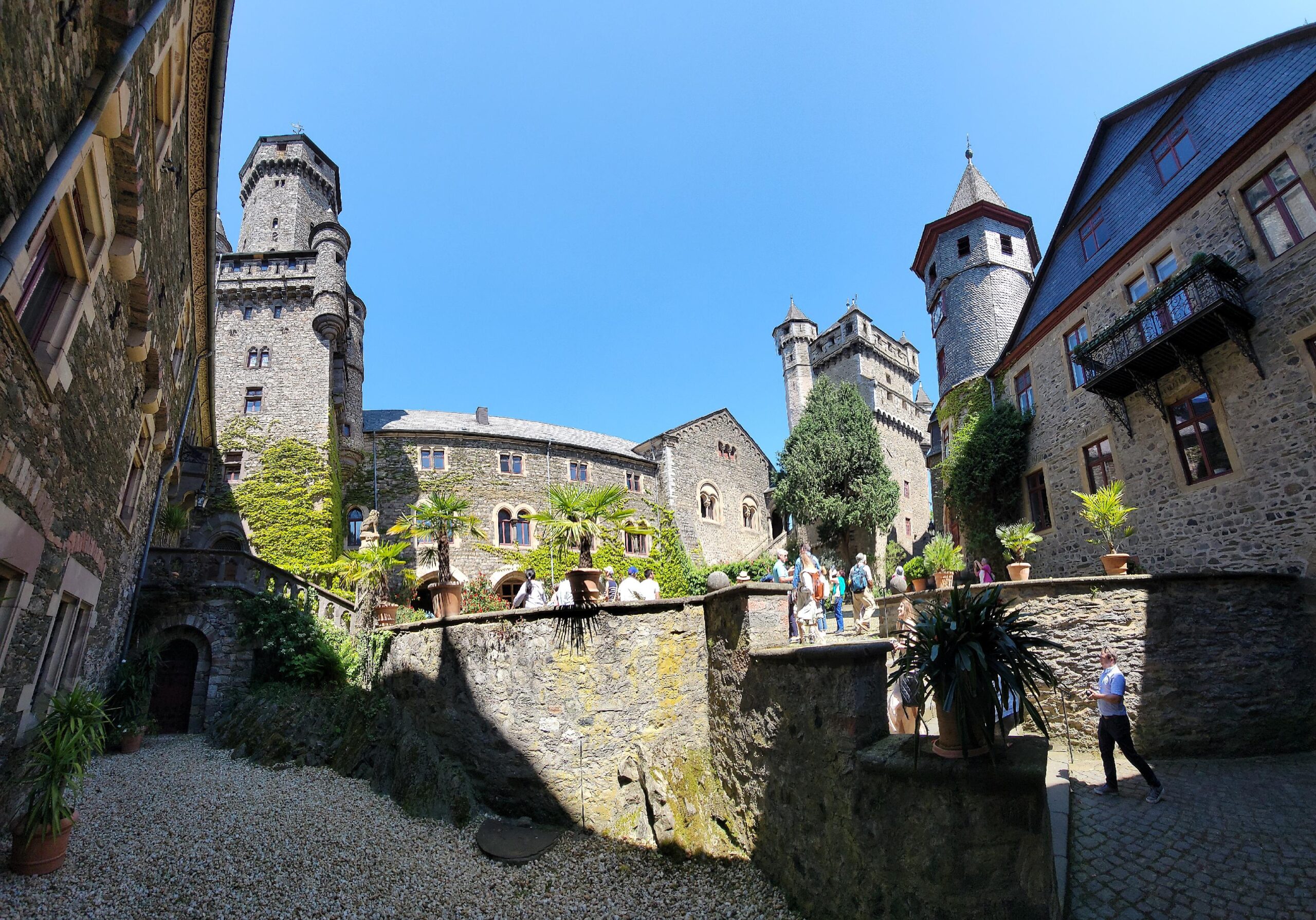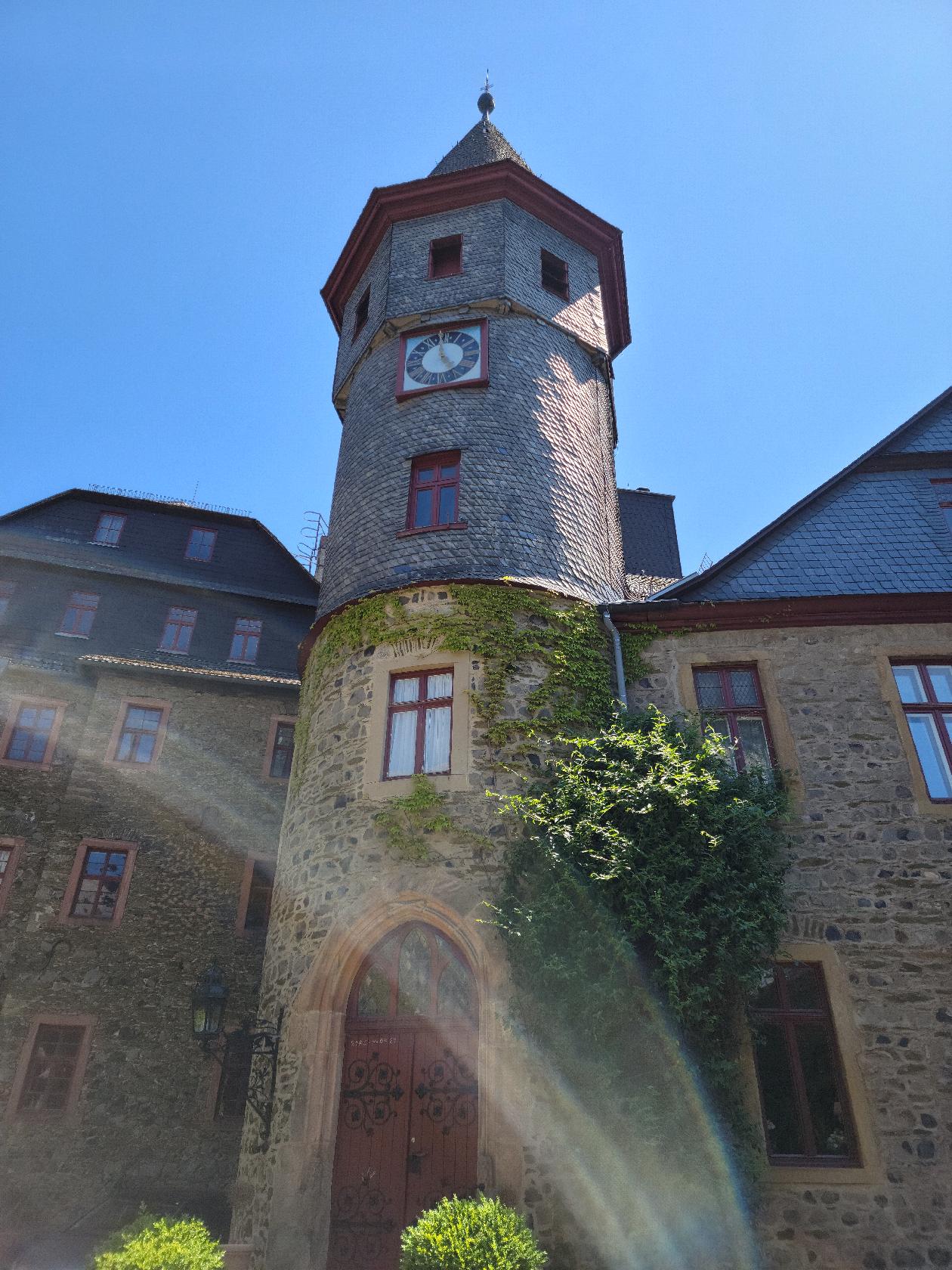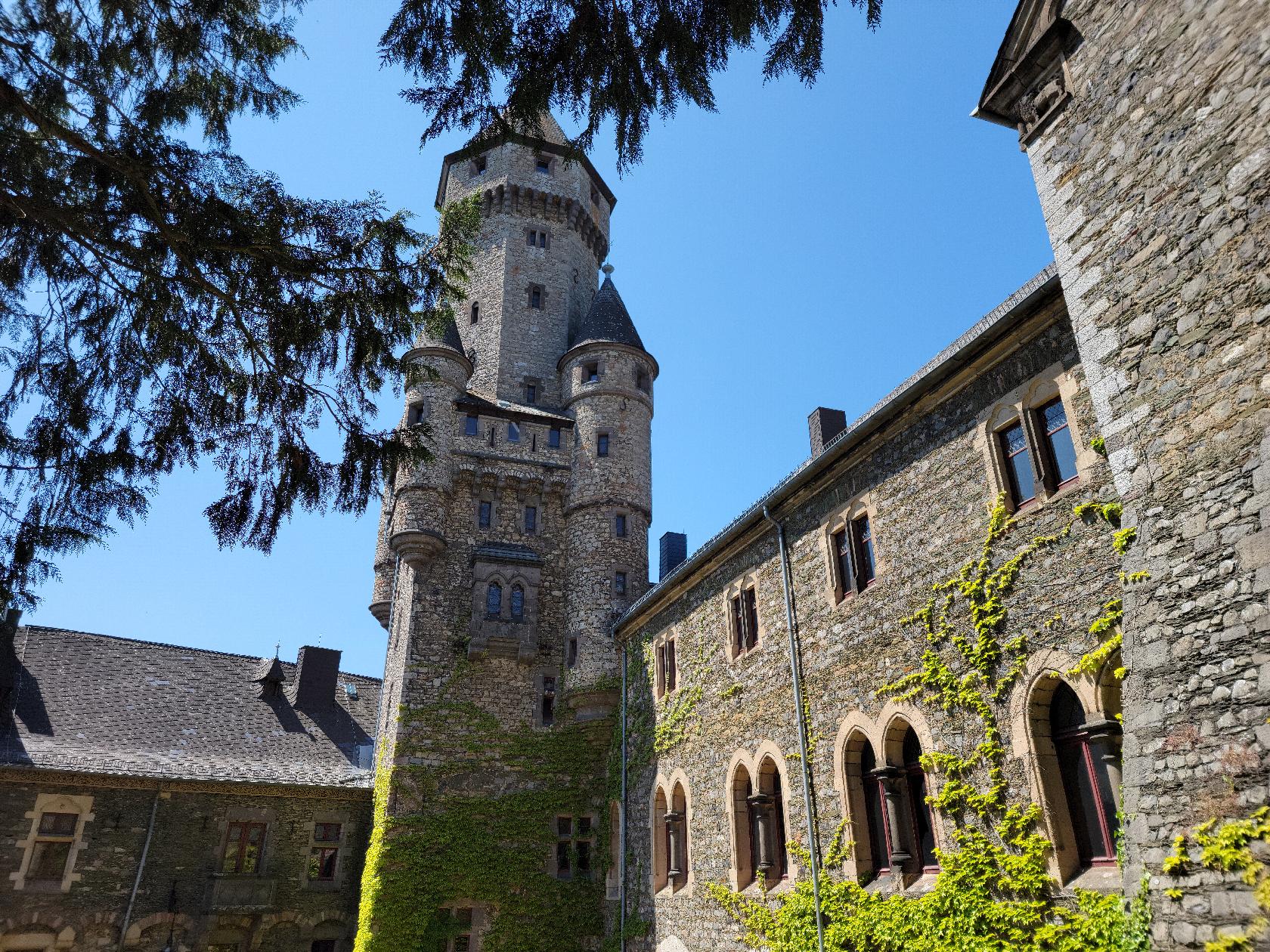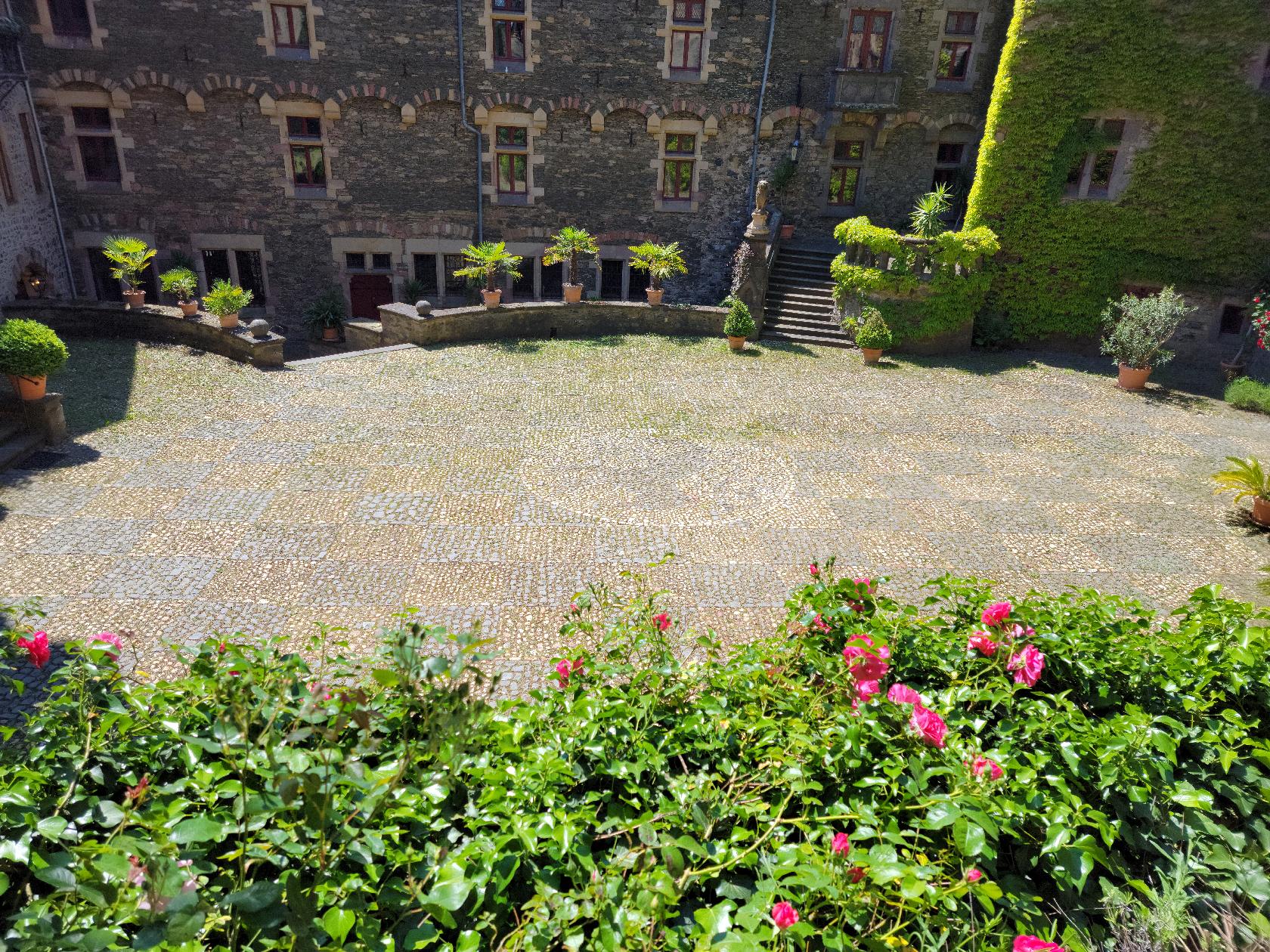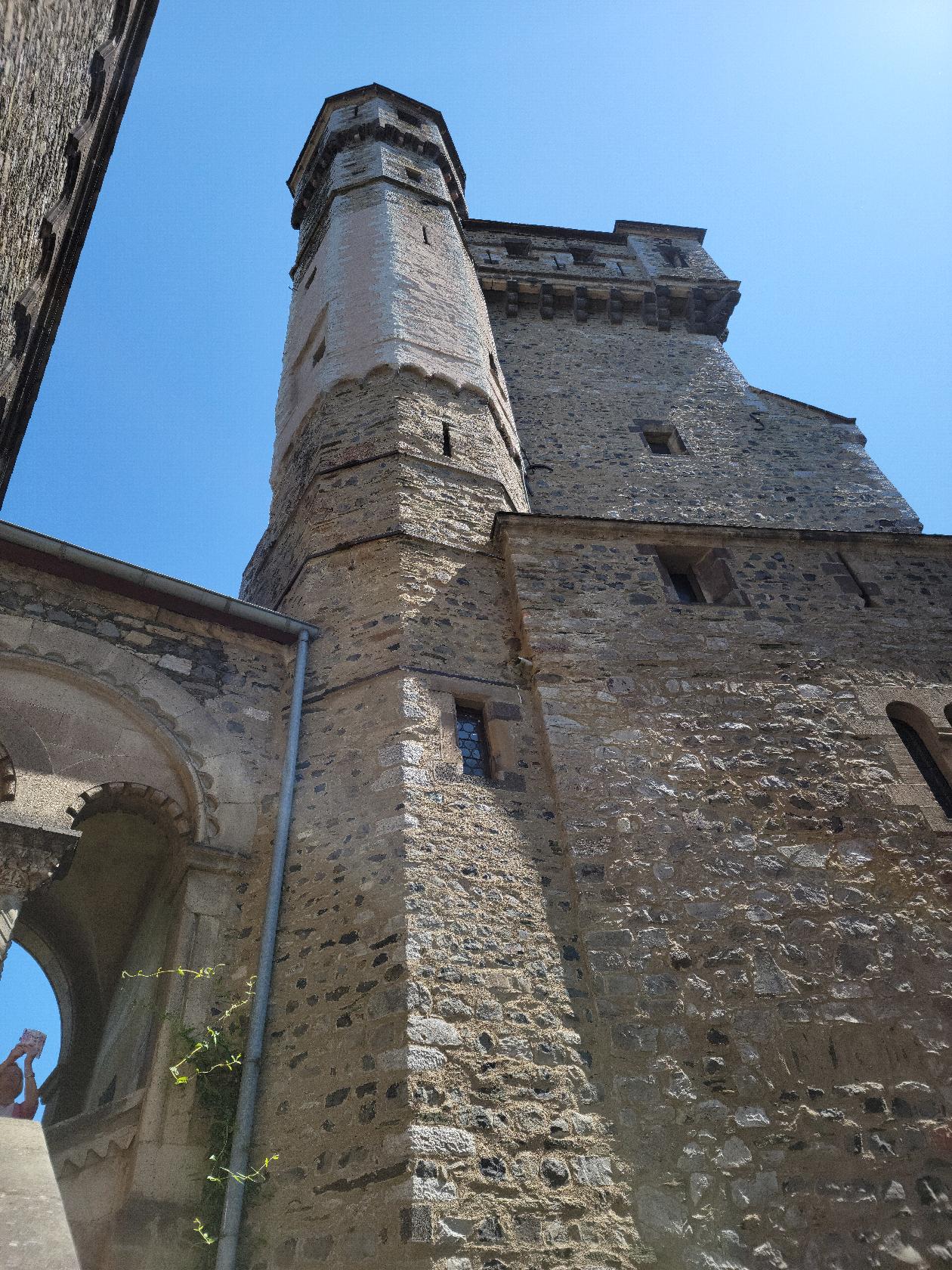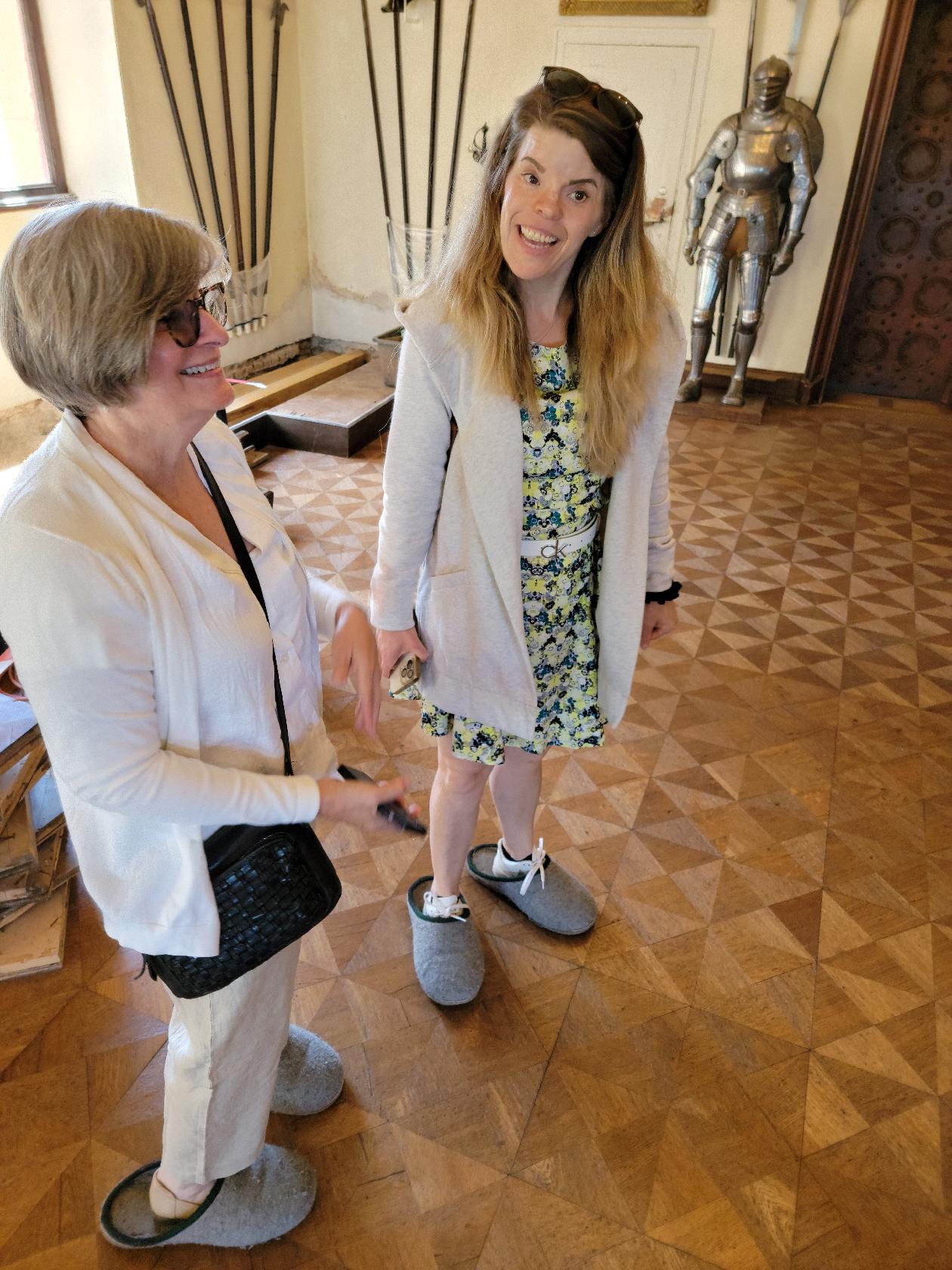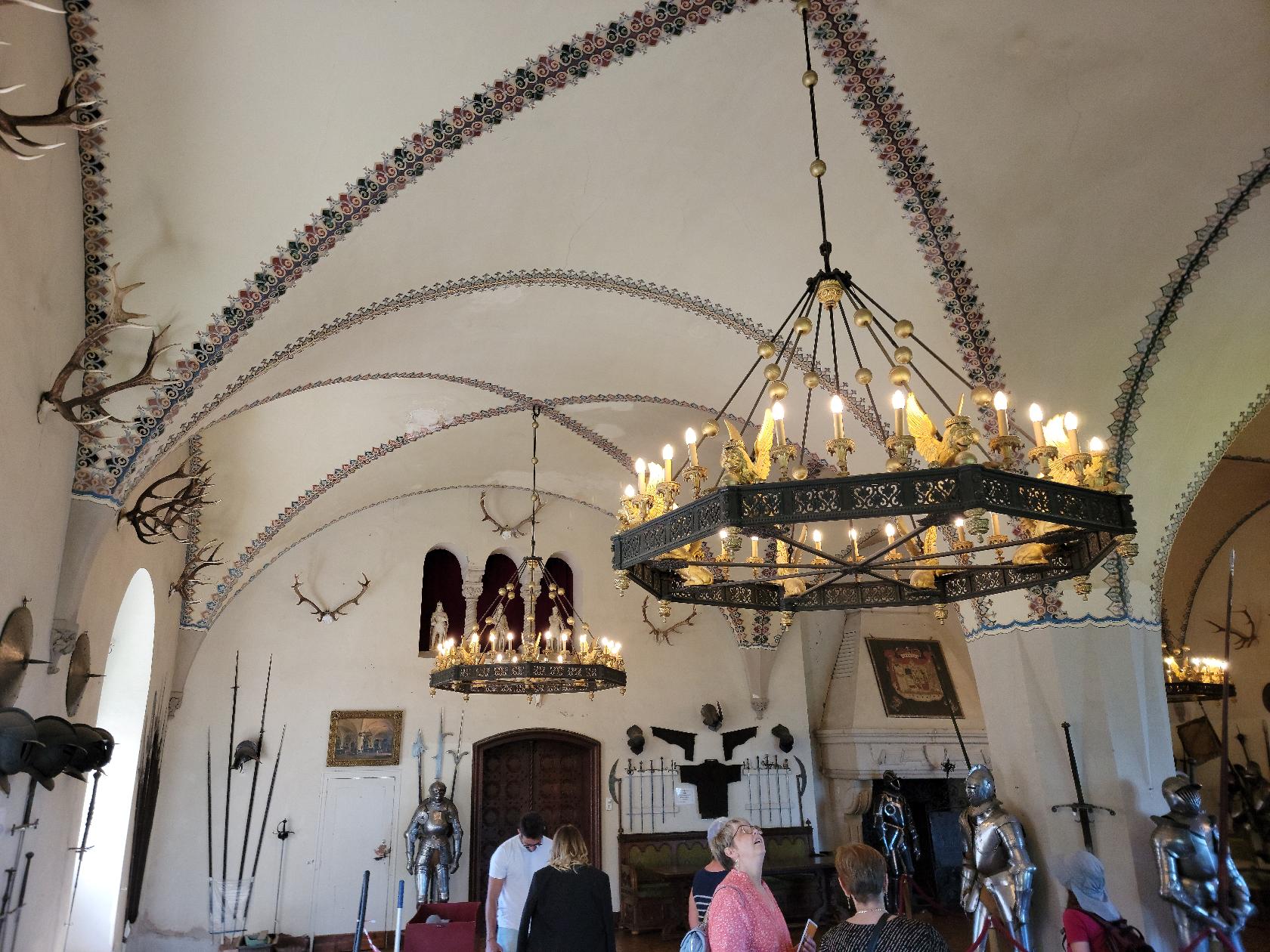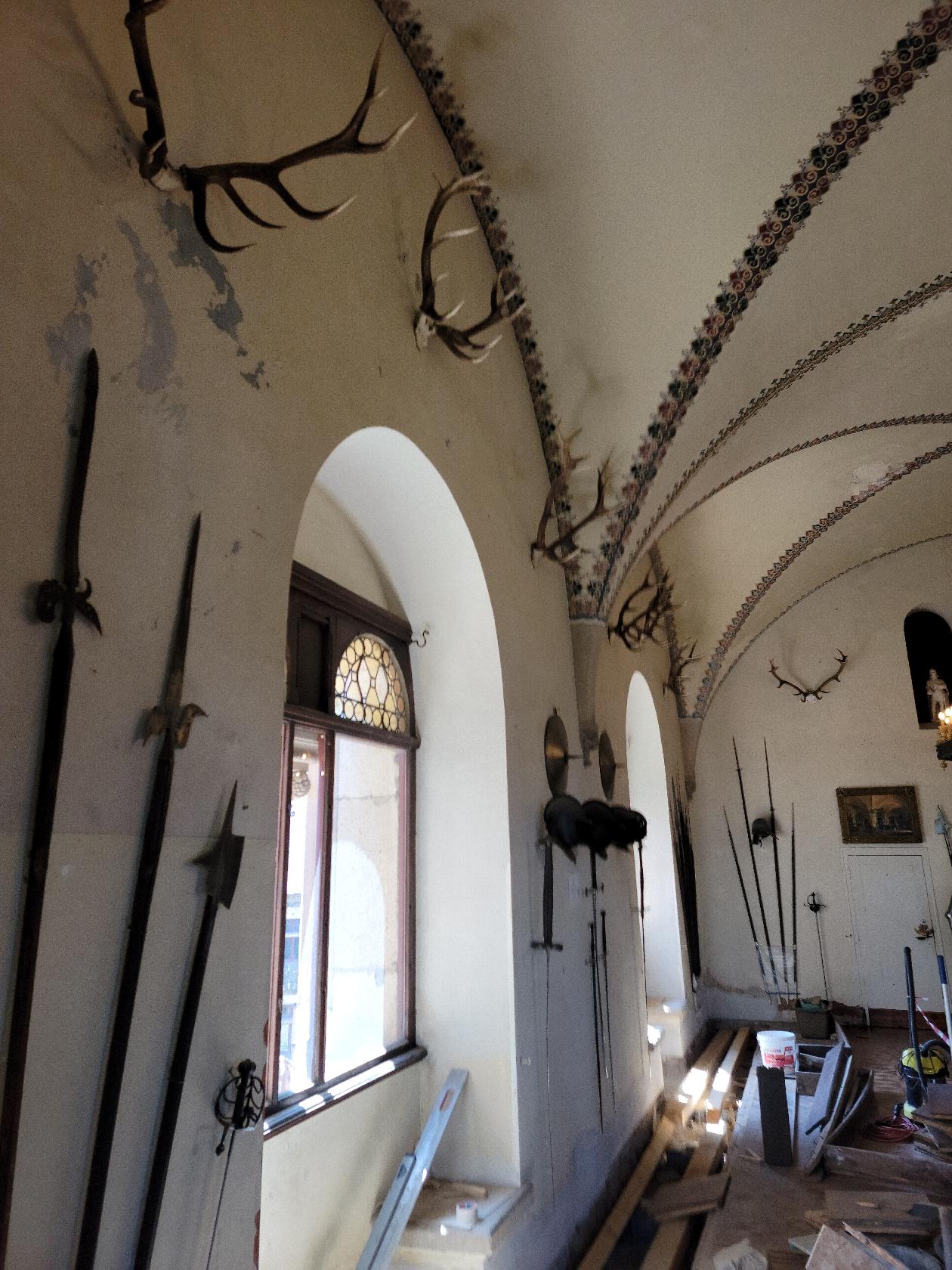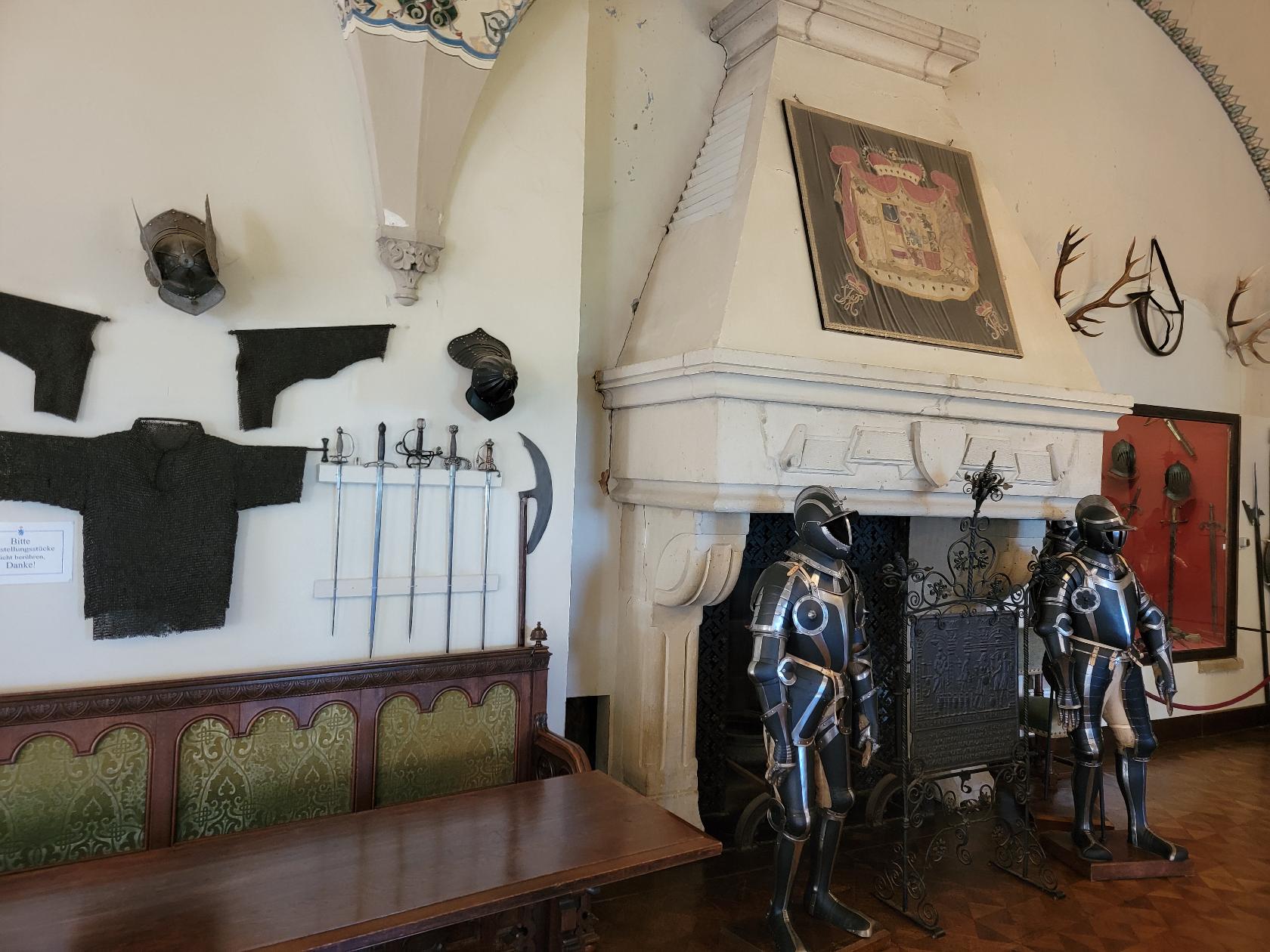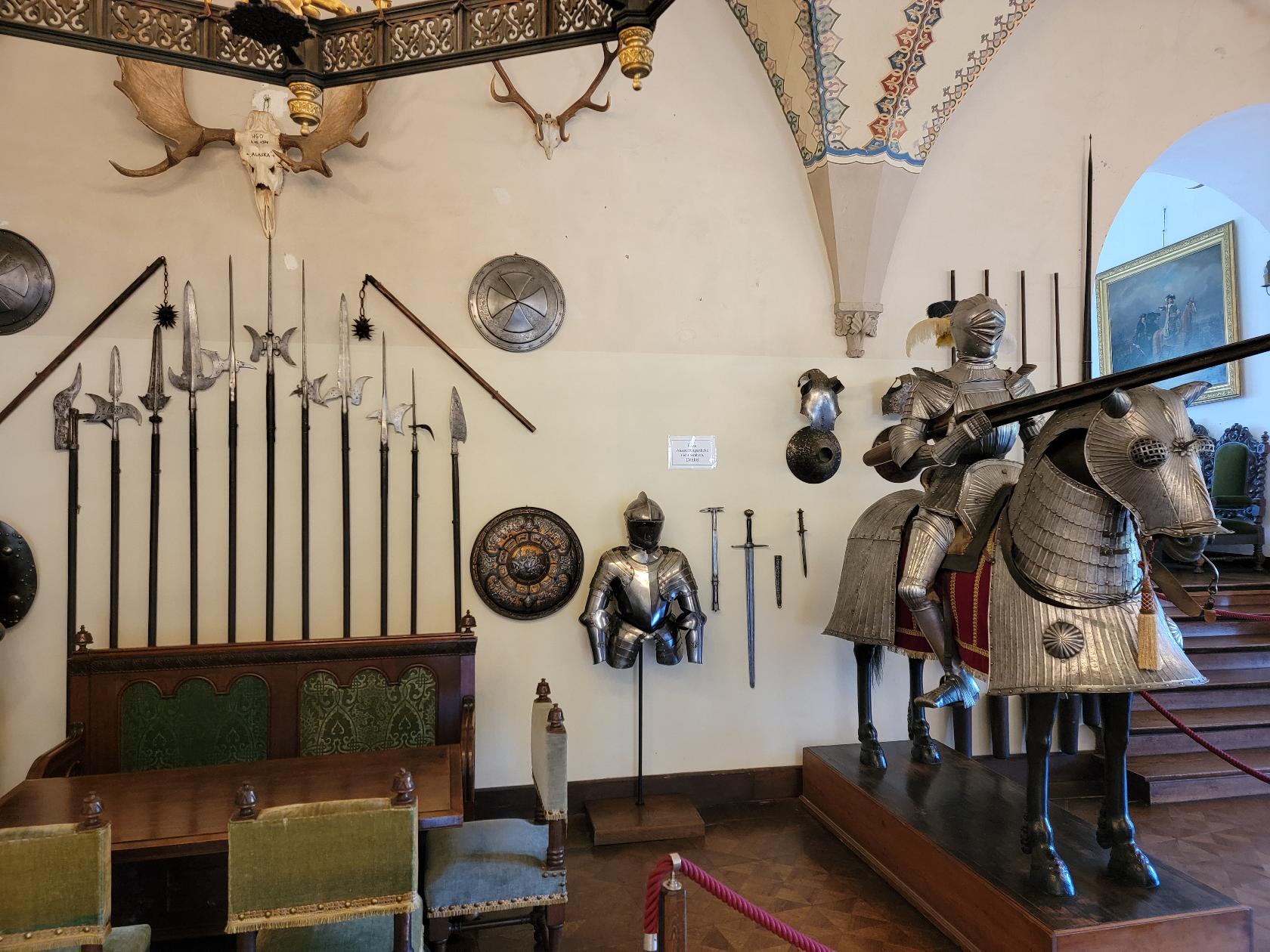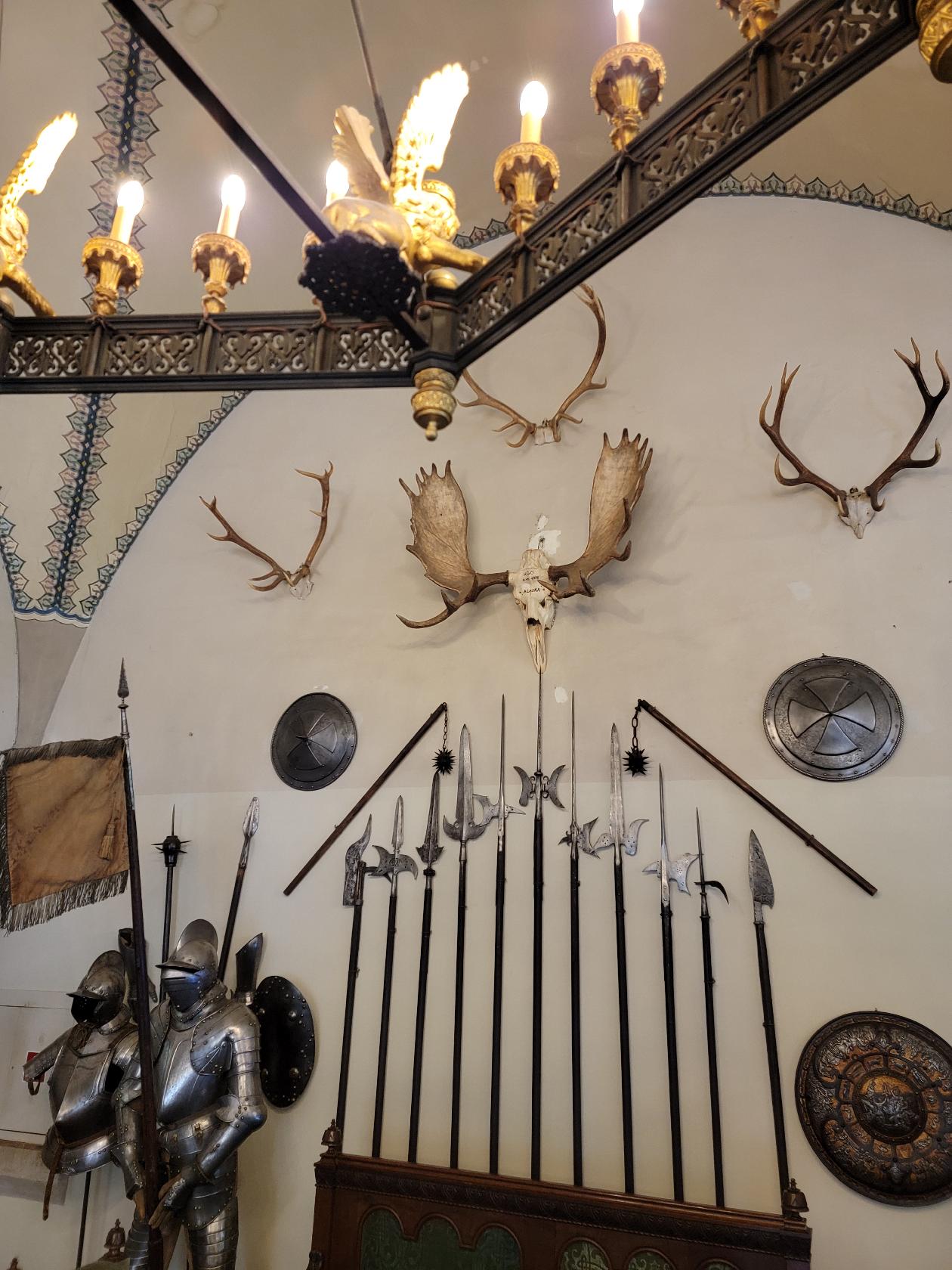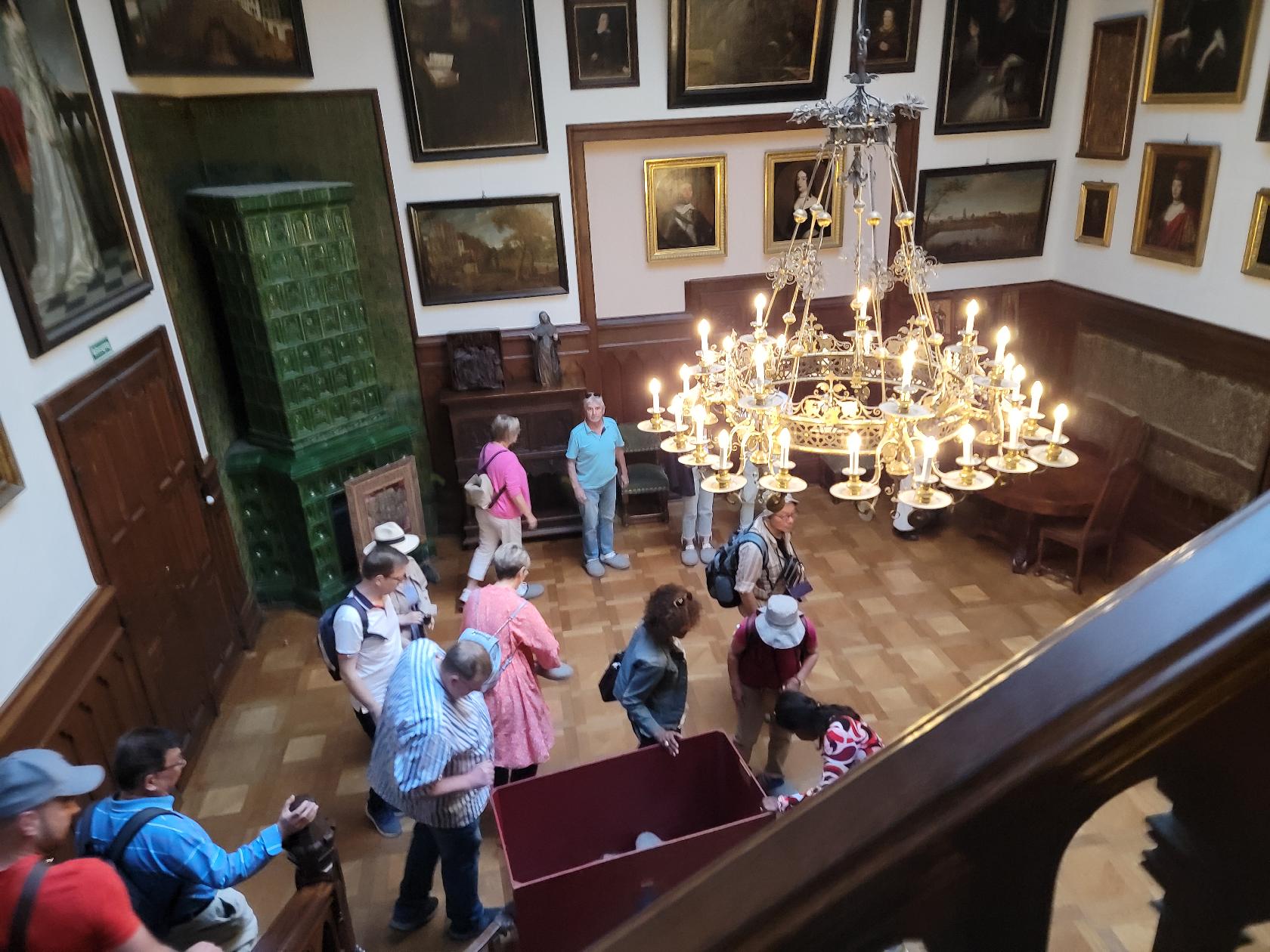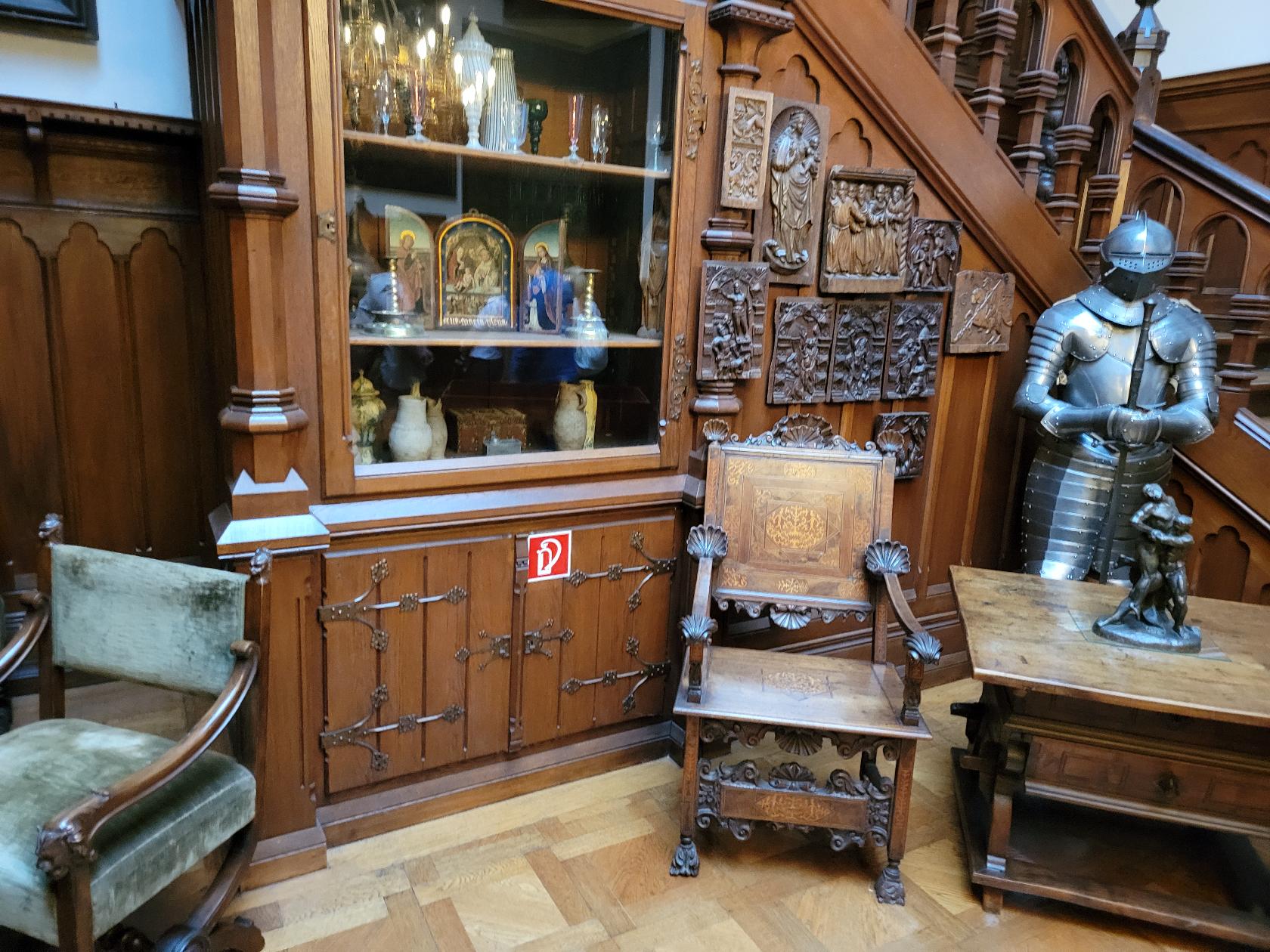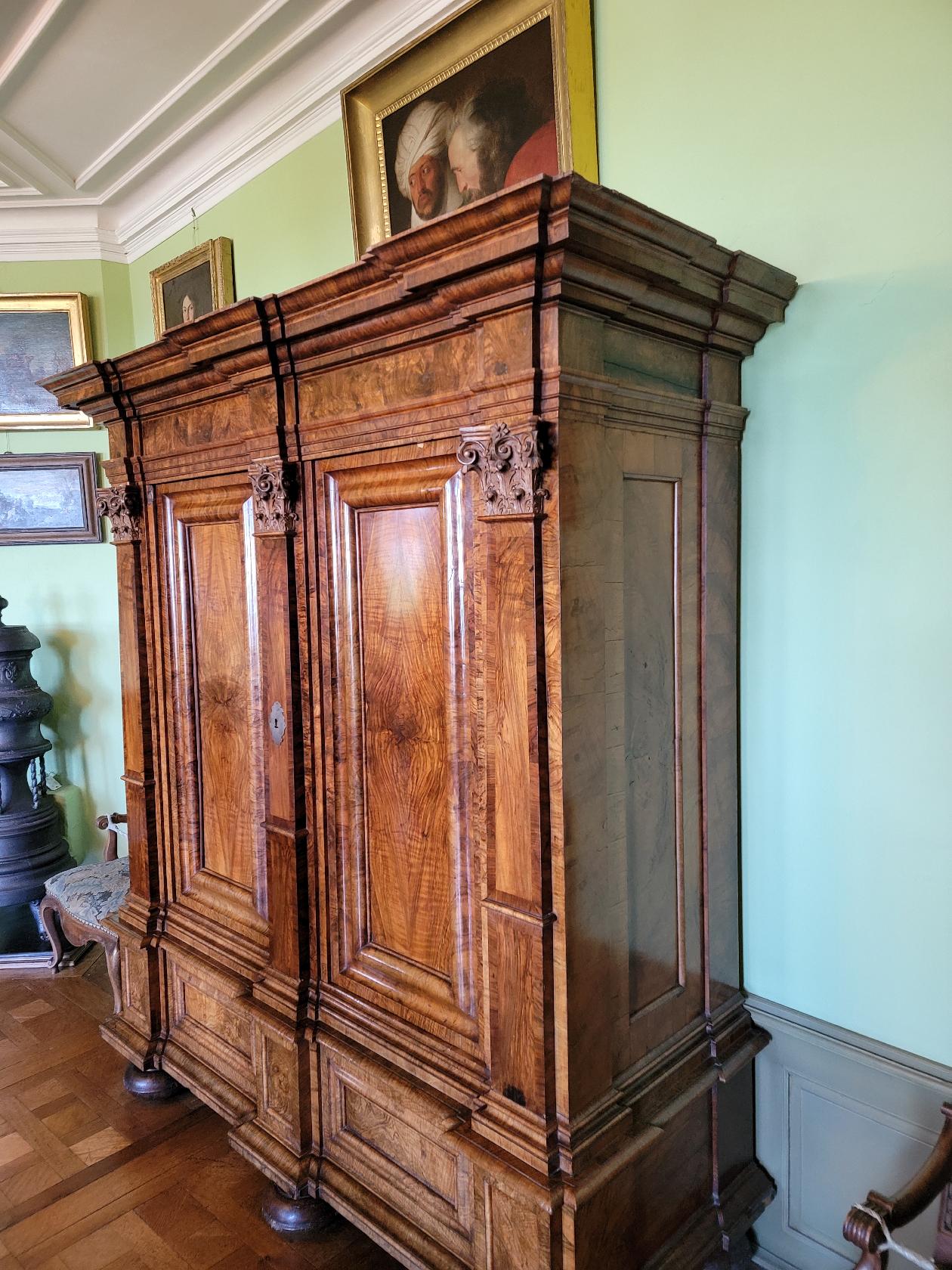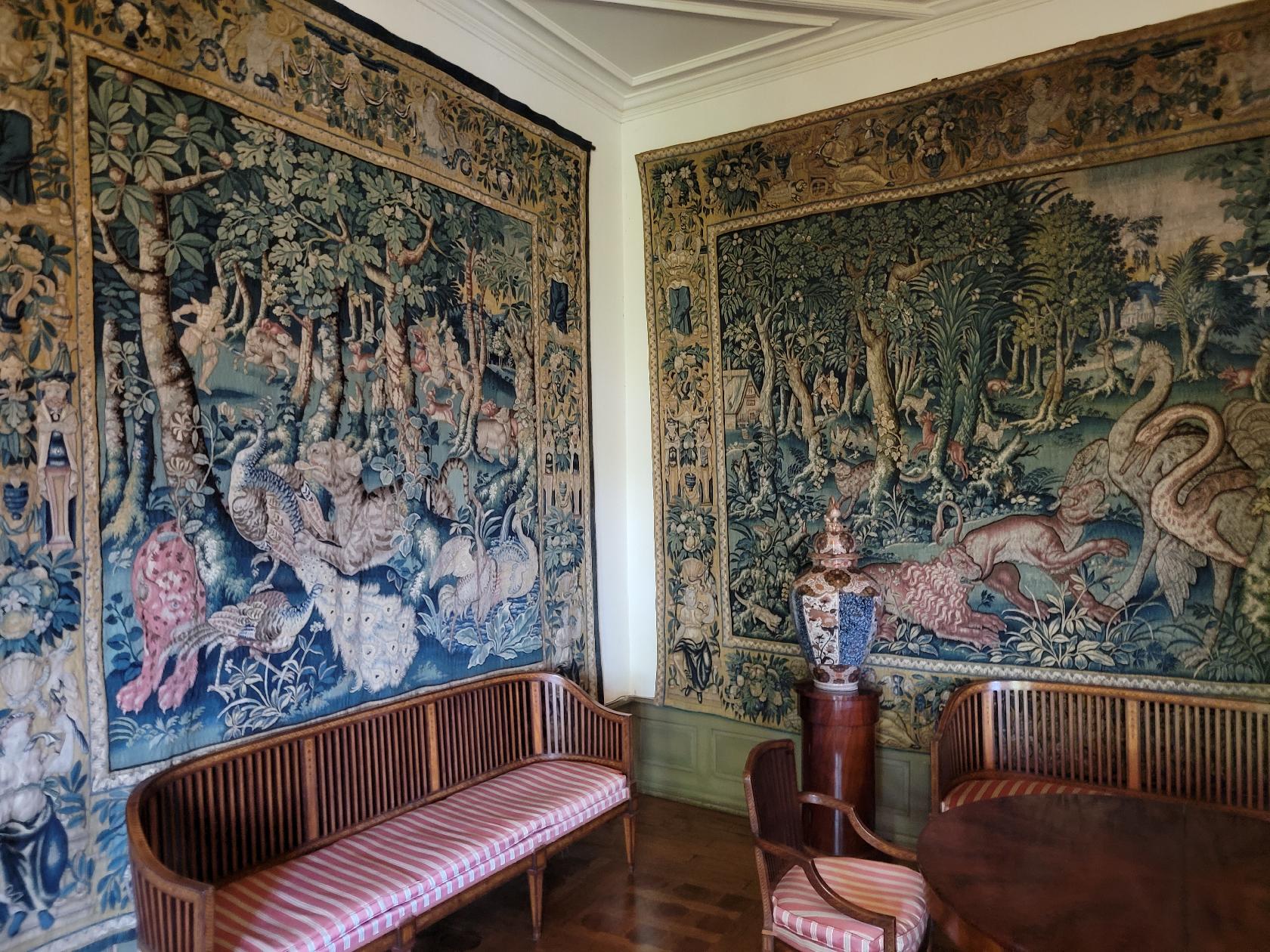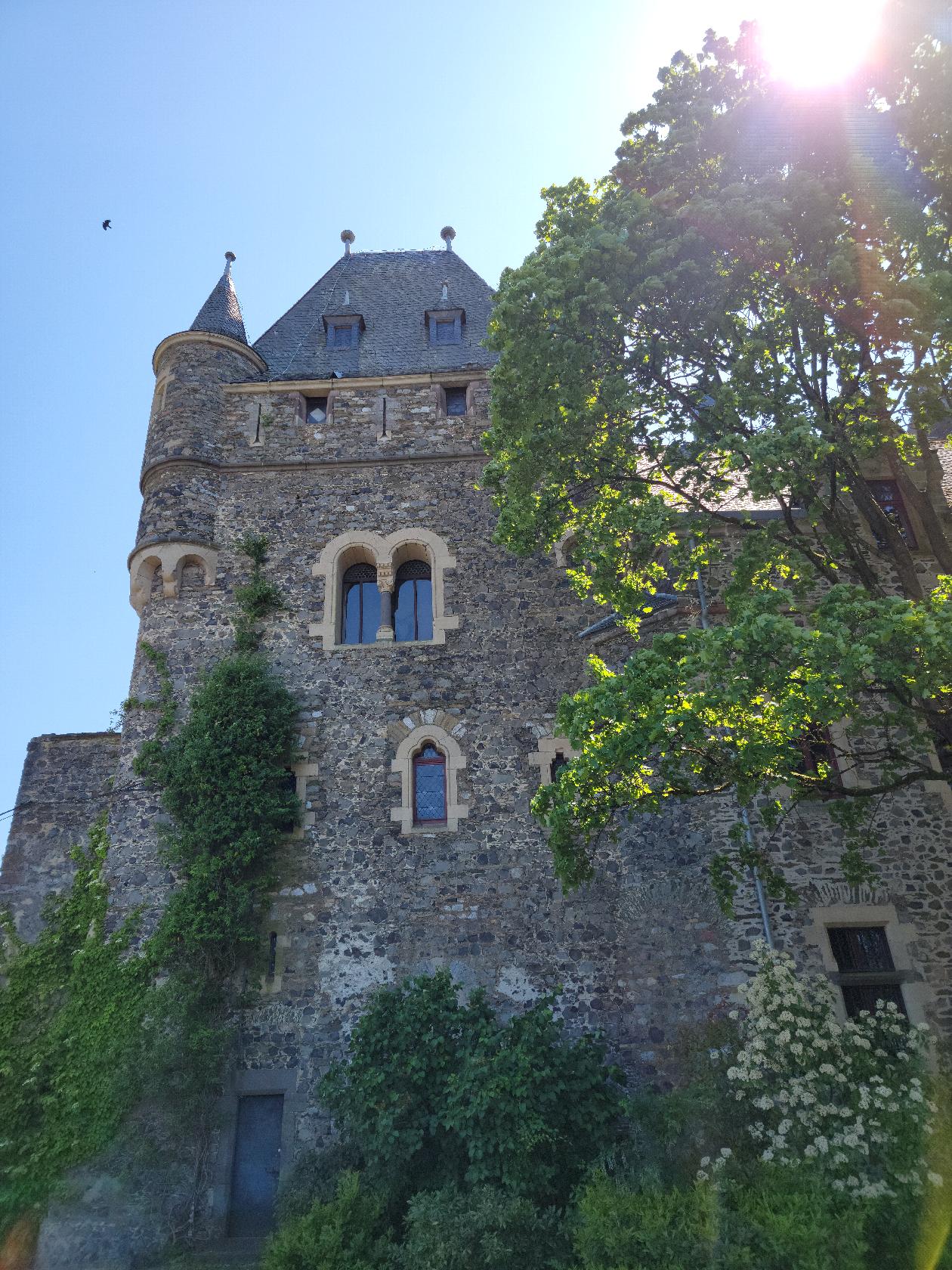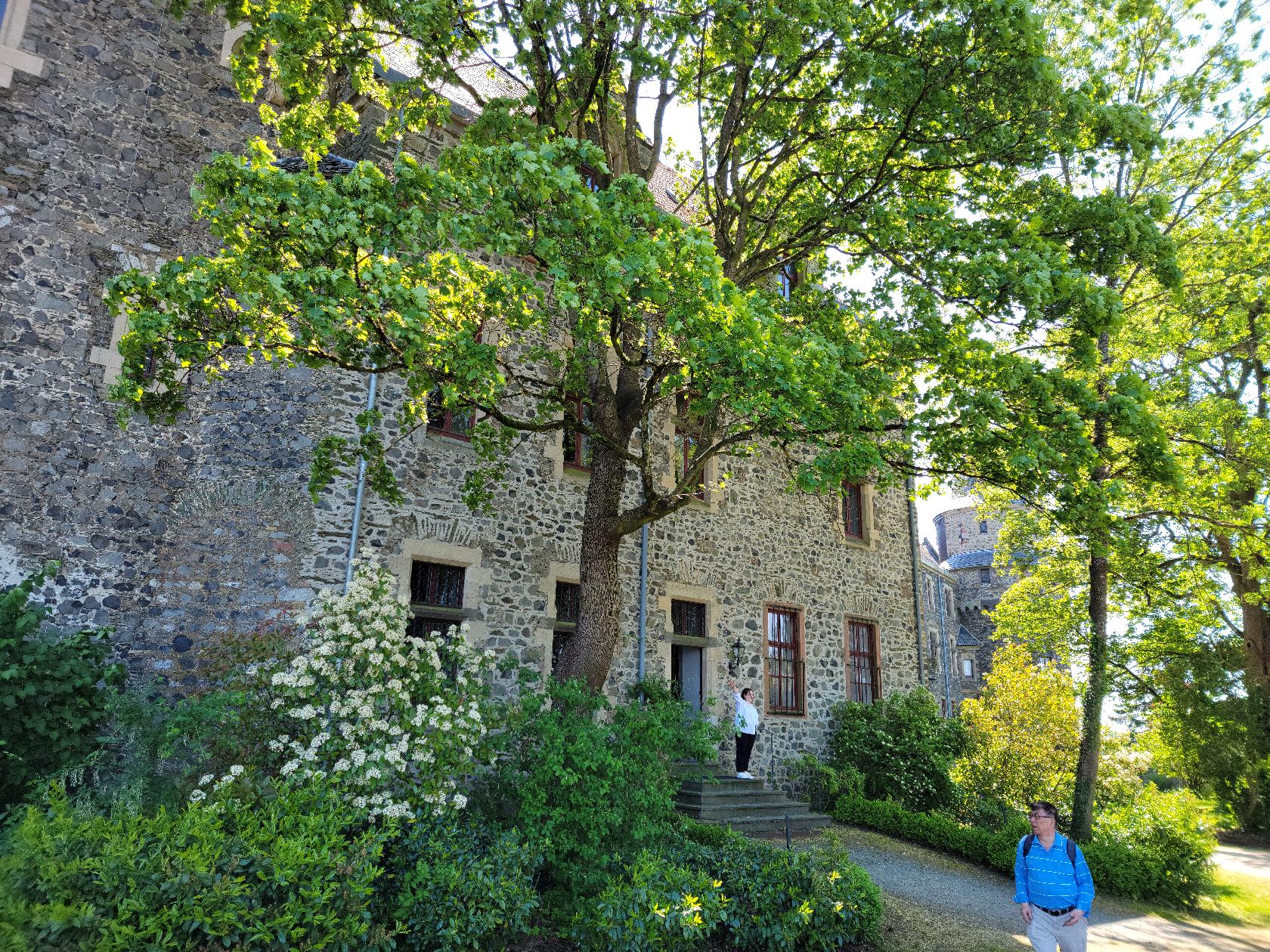An hour’s drive by car north of Frankfurt above the Taunus mountains you will find a small, quaint and often overlooked little town called Braunfels.

Braunfels
The town of Braunfels in the Lahm valley in Hessen and on the famous German Timber-Frame Tourist Road. All of the houses in the Altstadt are of this type construction and most are fairly old, sixteenth and seventeenth century.
The Altstadt lays to the east of the castle by the same name. Since it was built on the side of the same hill as the castle, some of the roads are pretty steep. Most are paved with cobbles and there are several signs, mostly if not exclusively in German, reminding visitors that the stones are uneven, slippery when wet, and the town and castle are not liable for any injuries, so watch you step when you visit.
The castle may be reached through the town via the Schloßstrasse, or on the other side of the hill via the Burgweg (this is where we parked).
Kratzsteine
If you ever wondered why old towns such as Braunfels had these many corner stones, or Kratzsteine; the following sign explains it. The interesting thing here is, that although these are very common throughout older German cities and towns, you will not find many examples in Braunfels; making one wonder why someone posted a sign above an example of one, when there are so few throughout the town.
The above can be translated loosely in English as the following.
The medieval cities had very narrow alleys, which were only meant for pedestrians and mule drawn carts. When horse drawn carriages came, they had difficulties trying to make the turns without slowing down. The hubs of the wheels or the side of the wagons would damage the buildings. In order to prevent this damage and the high cost of repairs, the home owners had to come up with something. They decided on giant house stones, or Kratzsteine, which were partially buried on the corners of the house. This forced the driver to avoid and swing their carriages wide, so they didn’t risk their wheels getting damaged from these strategically placed corner stones.
Castle Braunfels
Christian Christmas Tradition
In Germany there is an old religious custom on the twelfth day of Christmas, or what is more properly known as the Epiphany. On the evening of or the day of Epiphany the front door of the building is chalked with the pattern “yy * C + M + B * YY”. The CMB is short for the Latin phrase Christus mansionem benedicat, or in English, May Christ bless this house. The YY are the year divided up appropriately.
Castle Innards
The courtyard of the castle is fairly large and surrounded by three walls and towers. The inside of the castle is typical for one of this period. The slideshow below finishes our tour of the castle and our visit to this very nice little town in Hessen.
